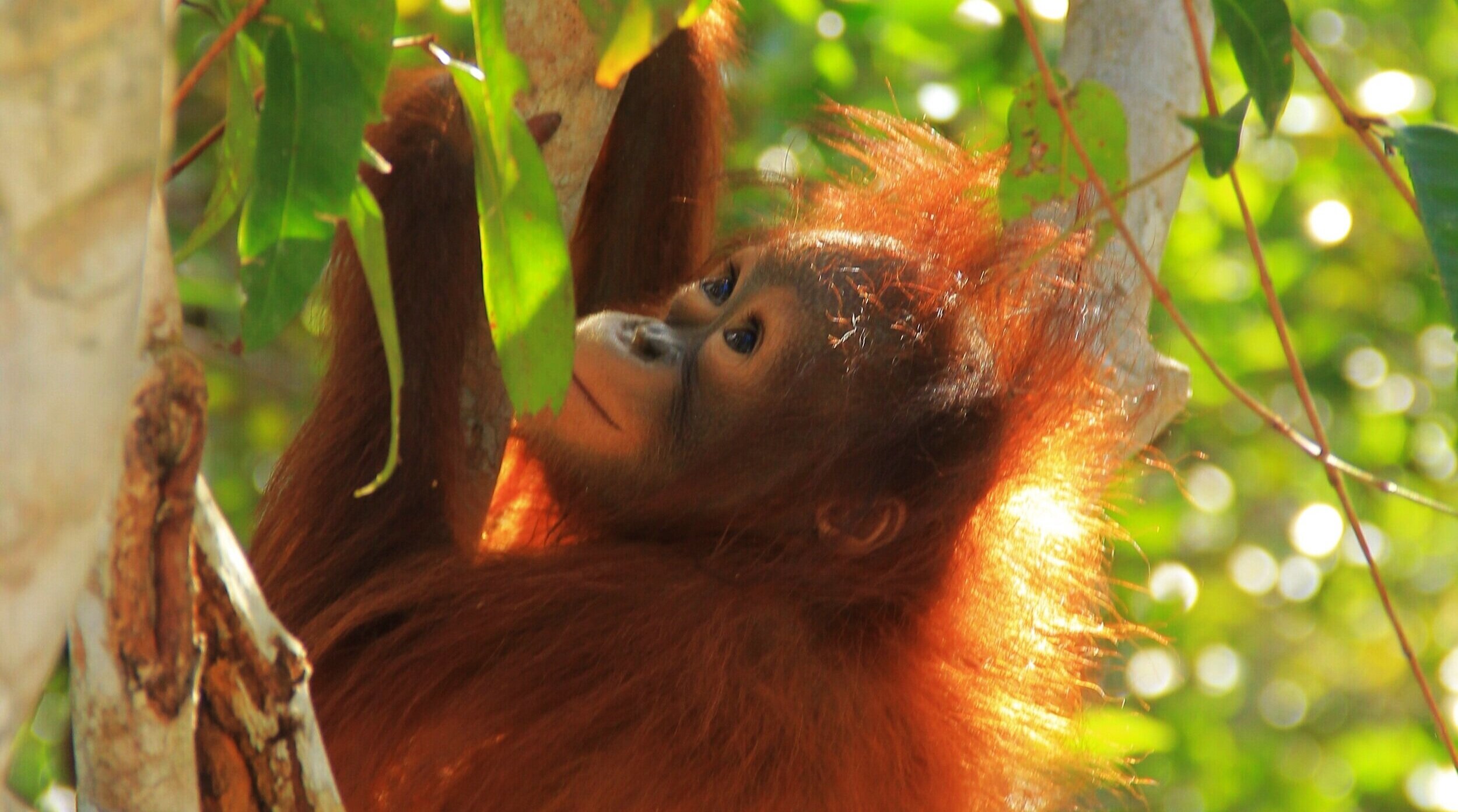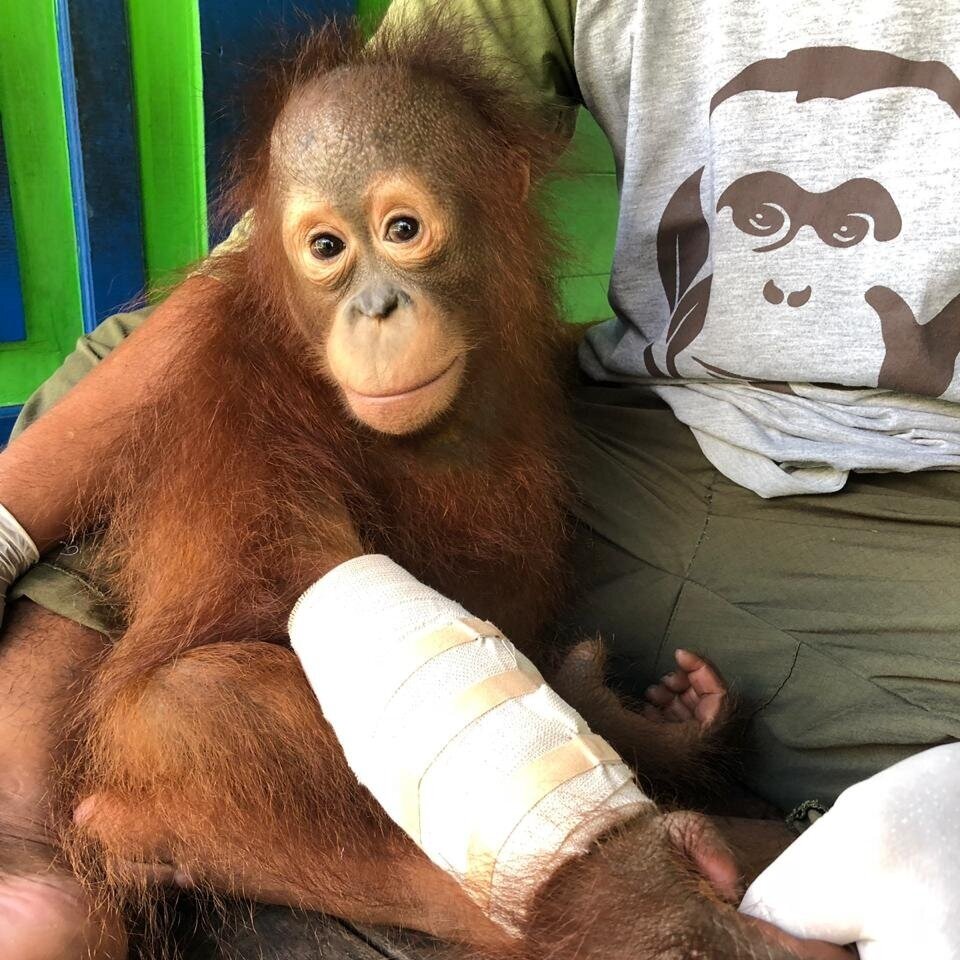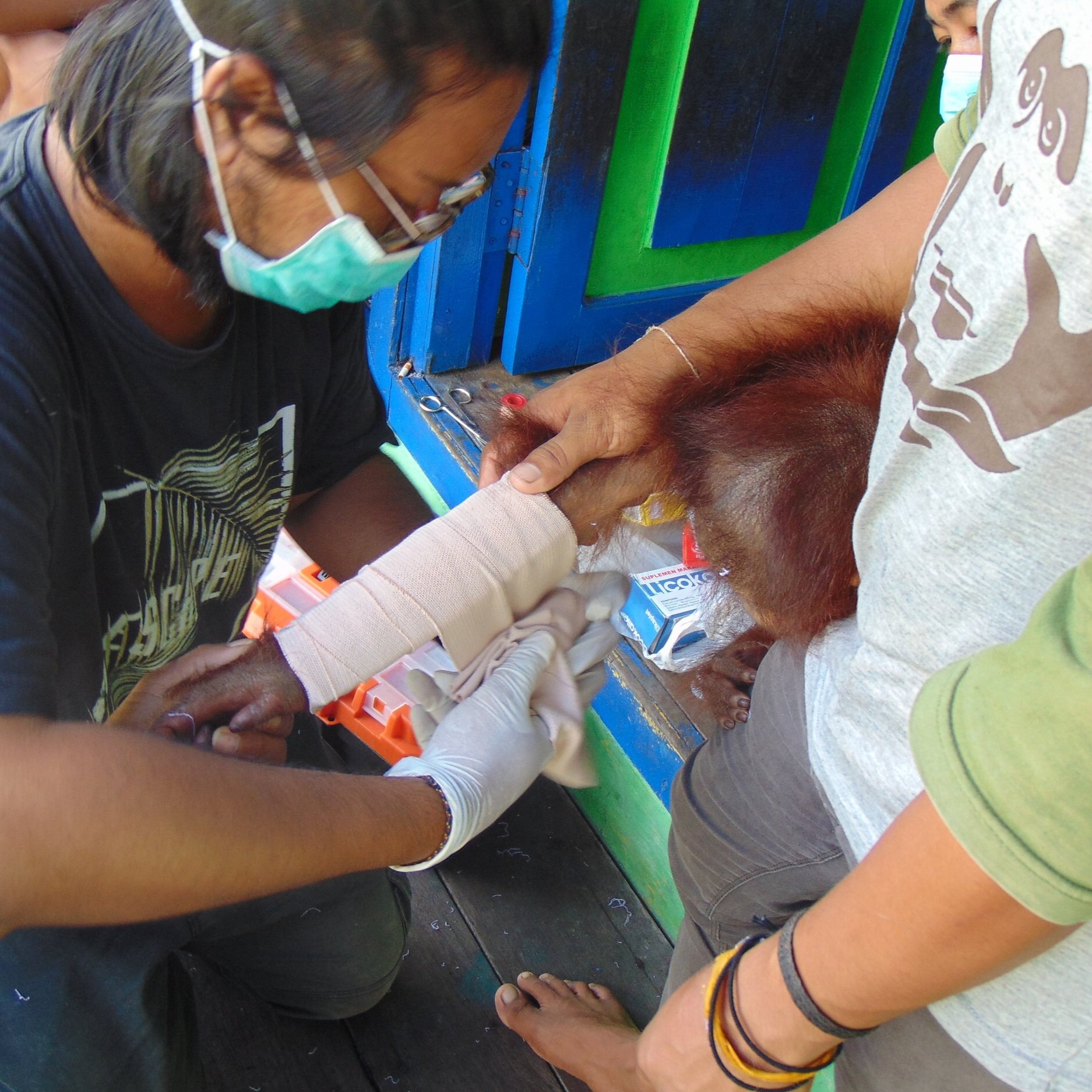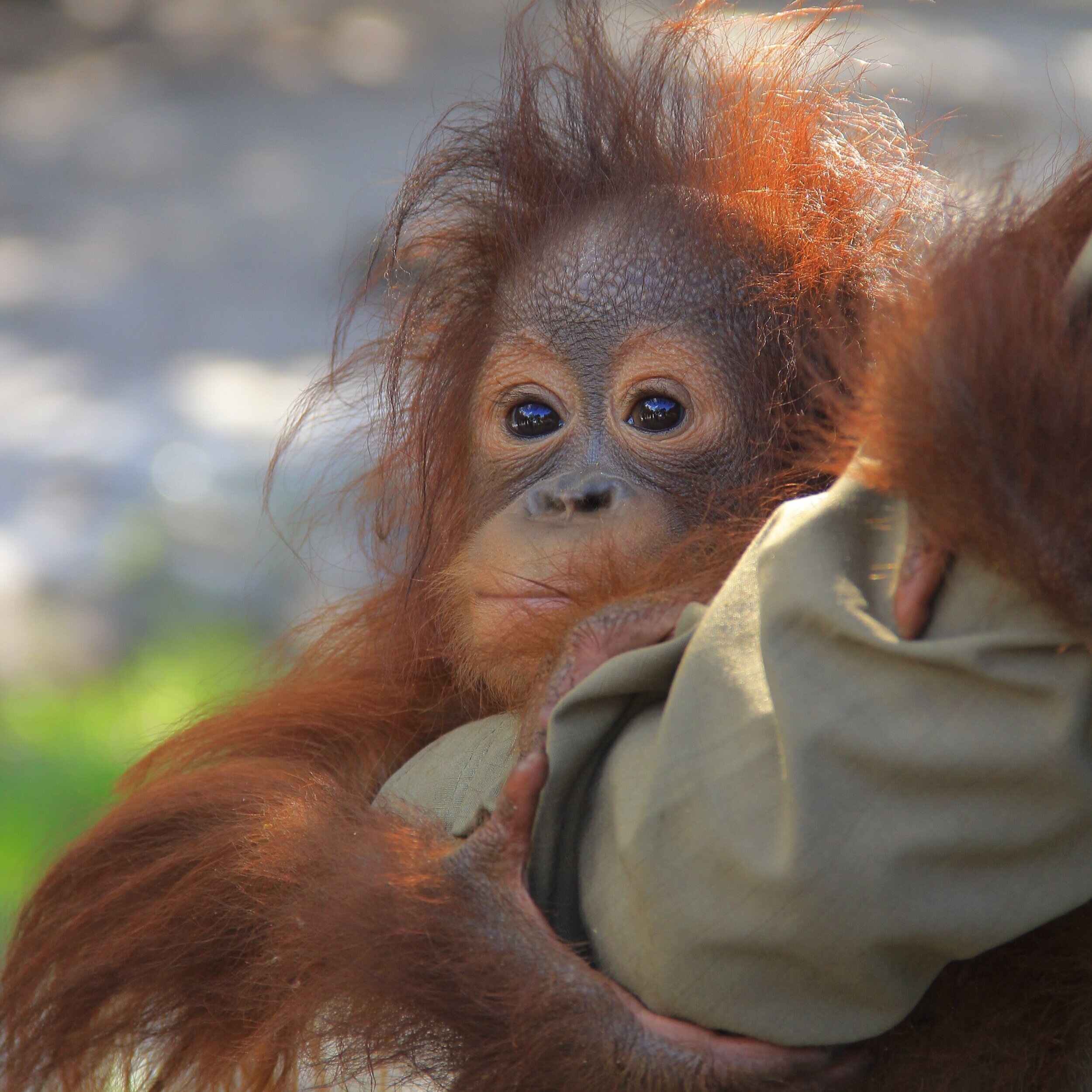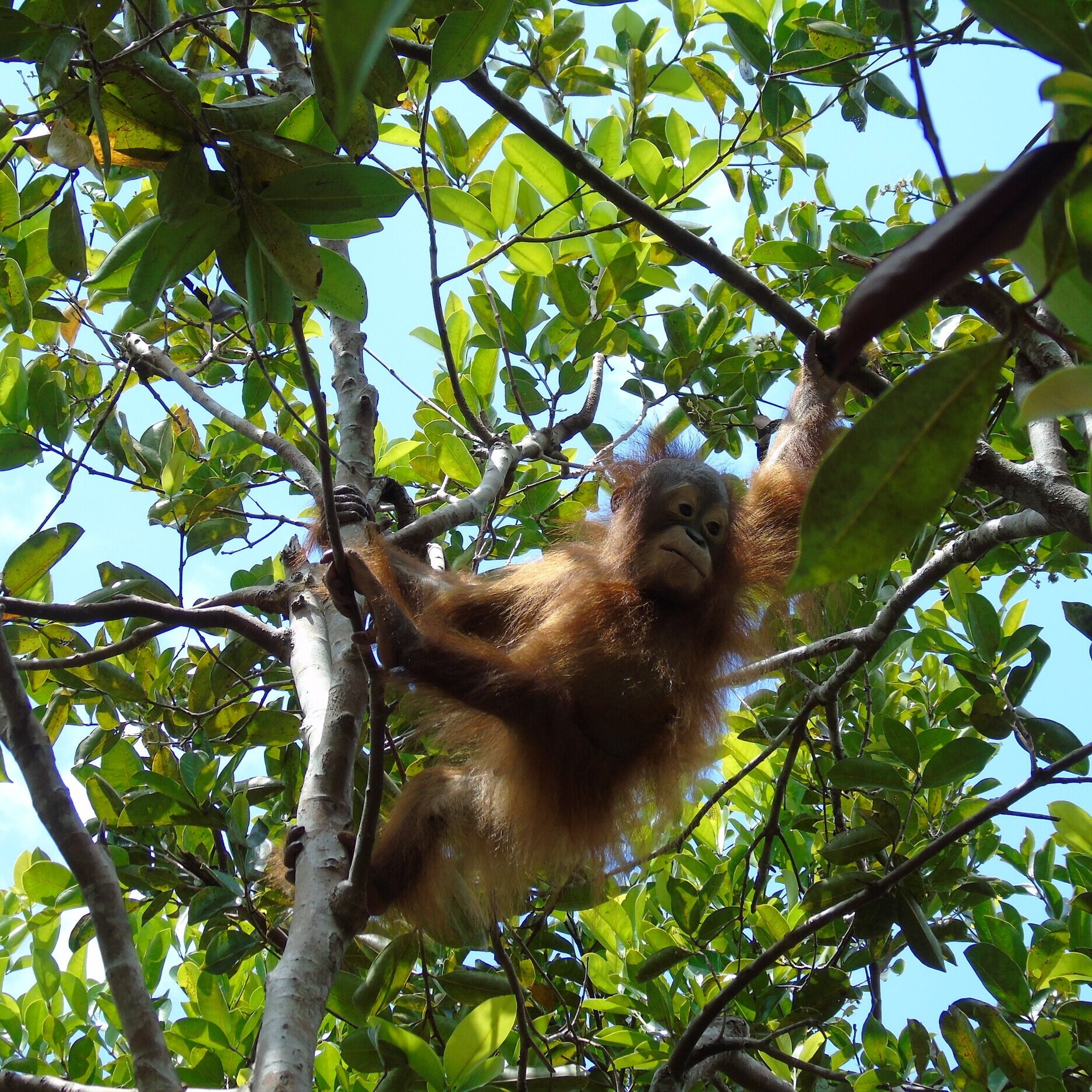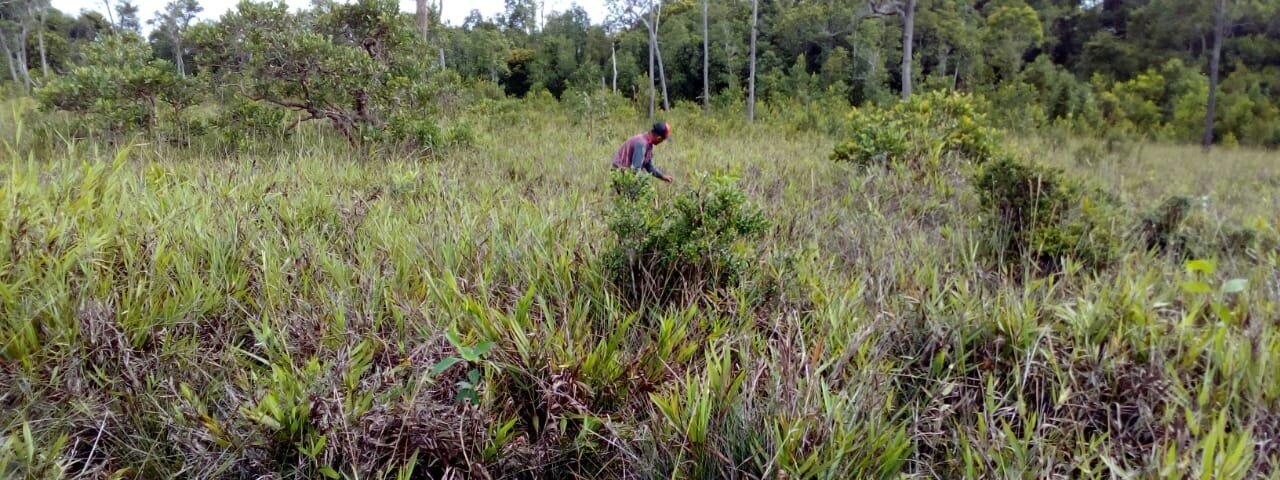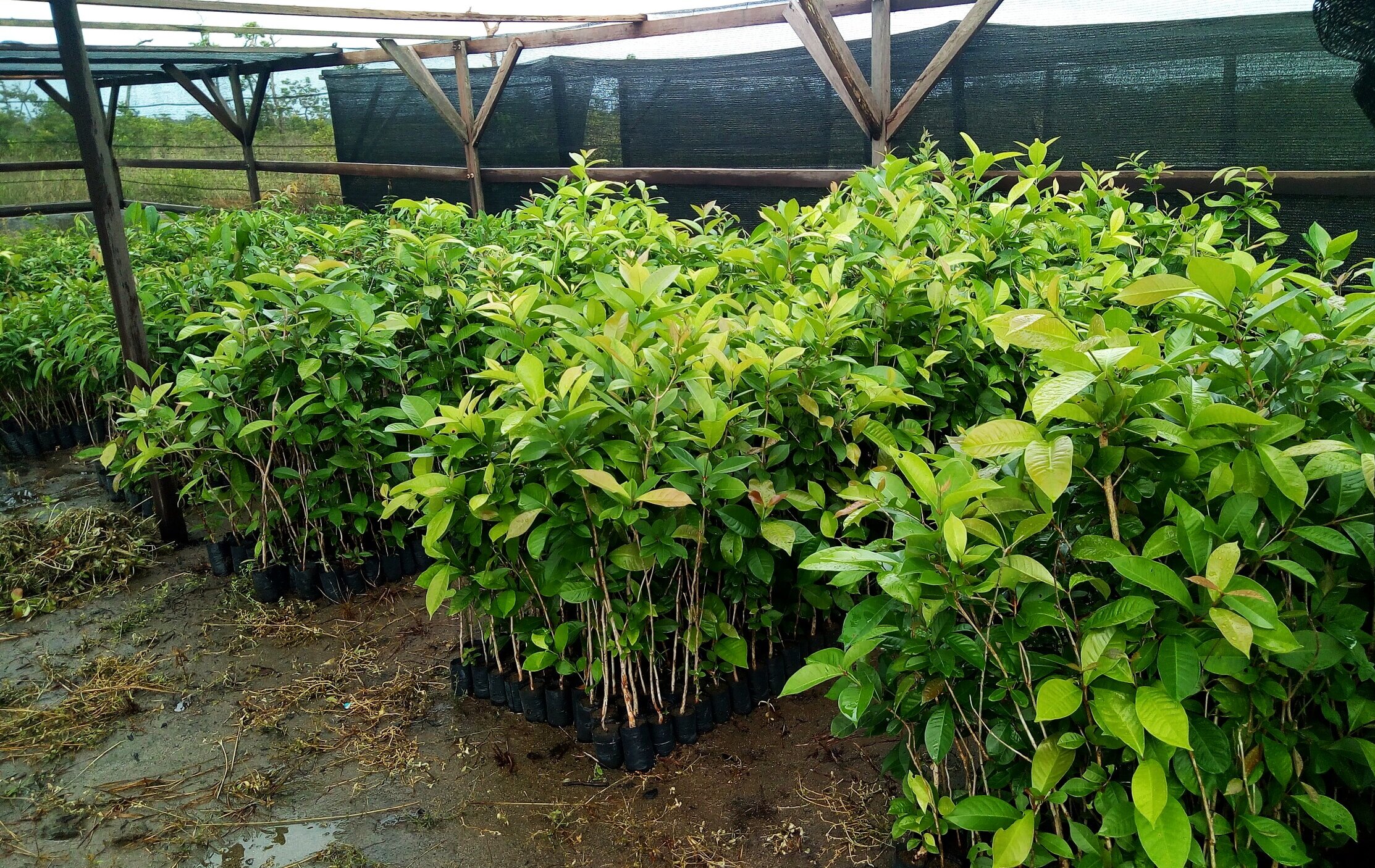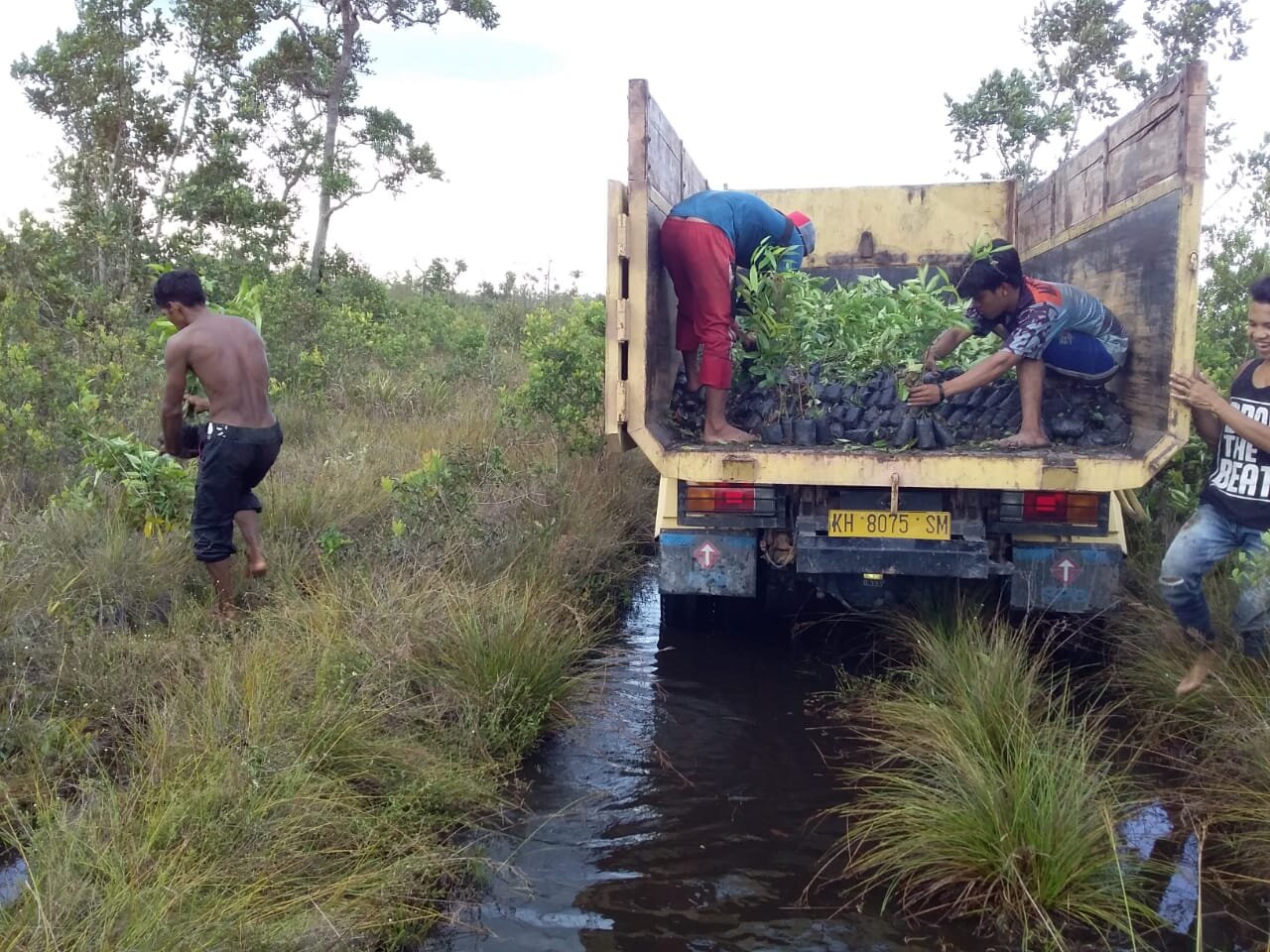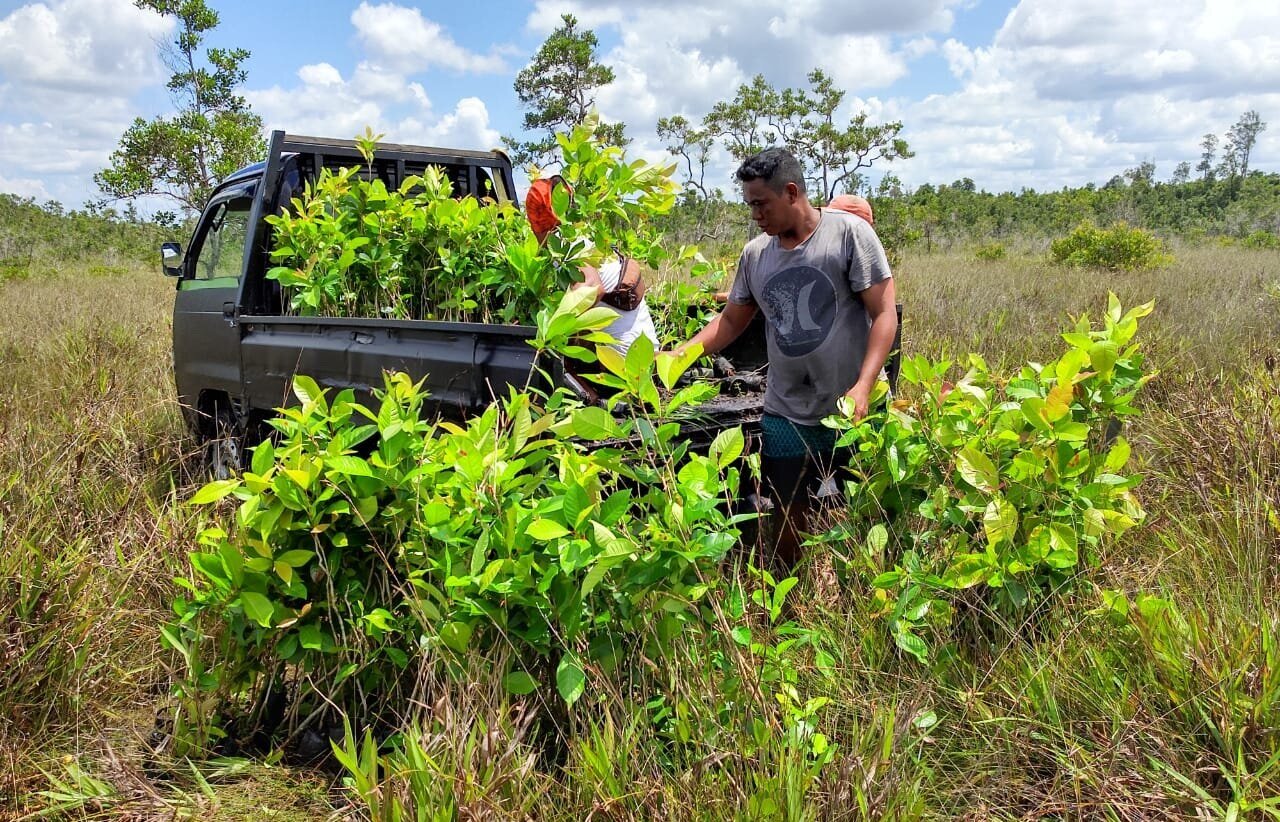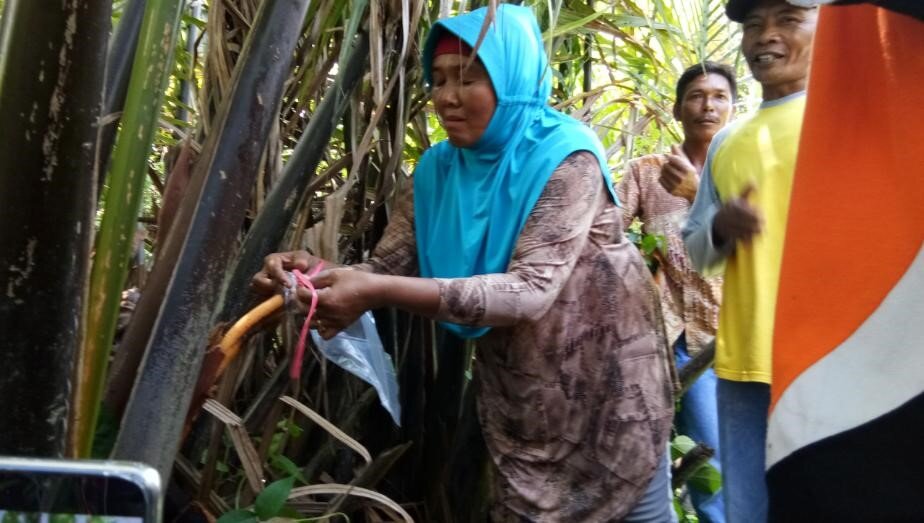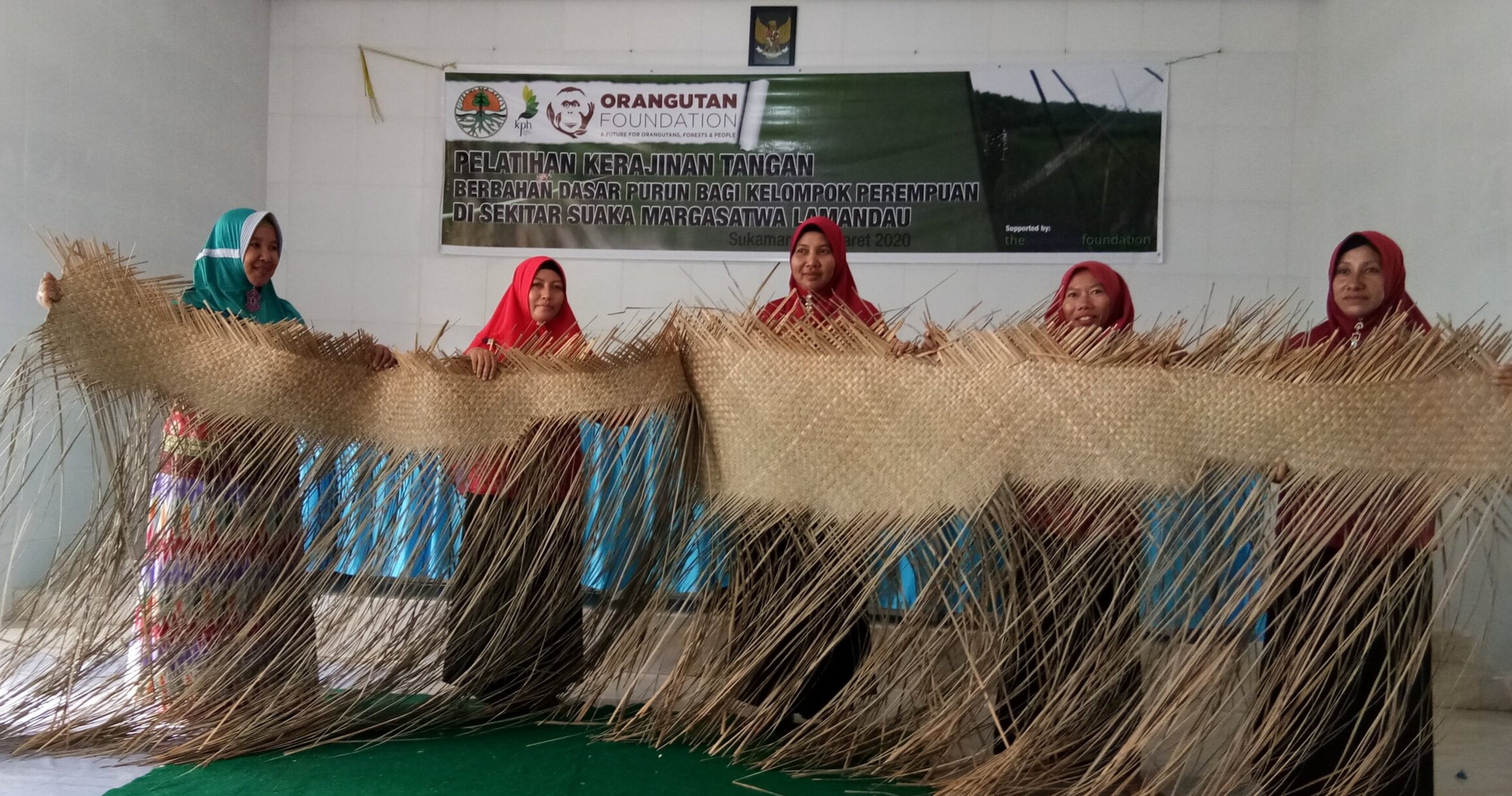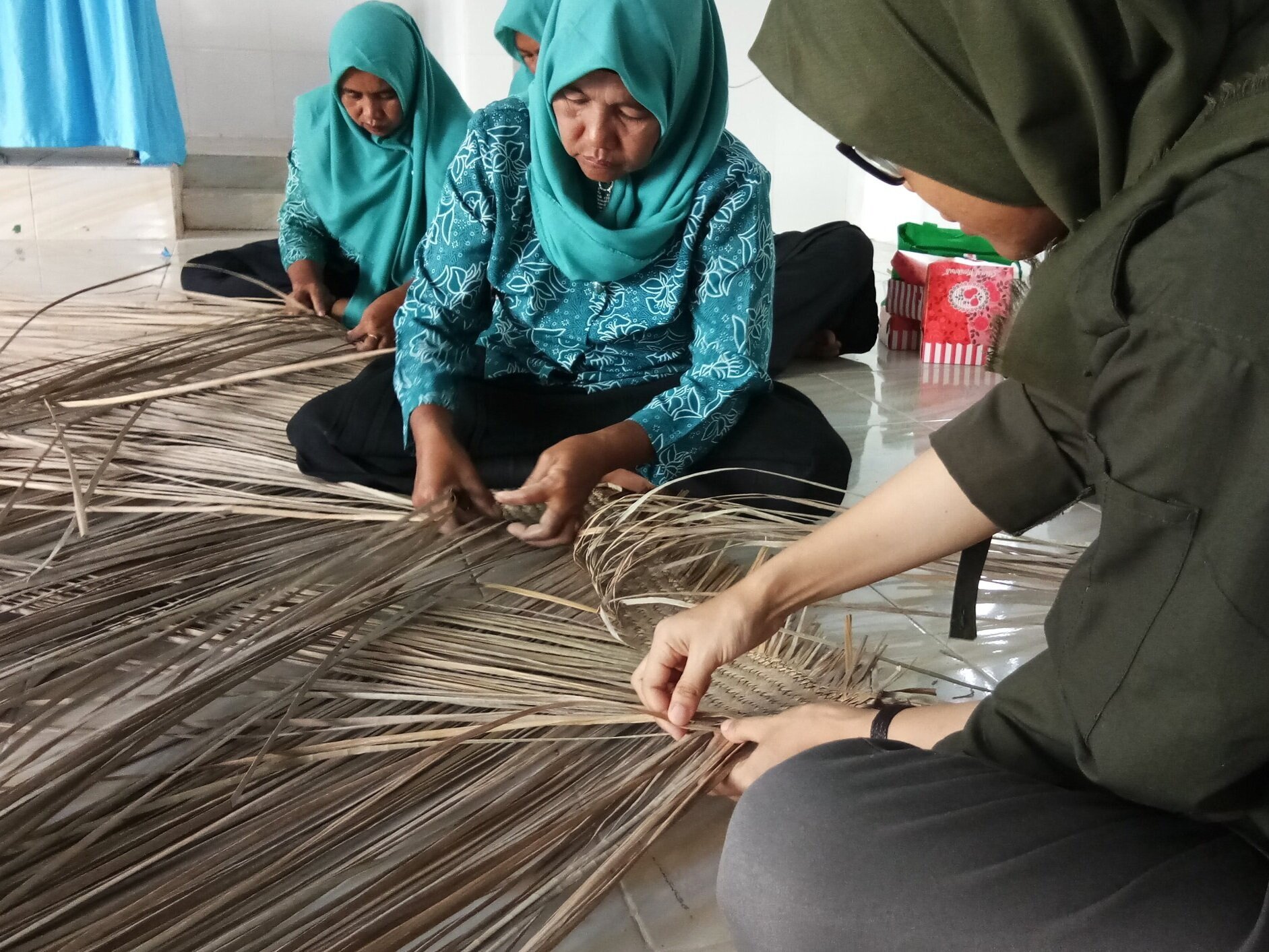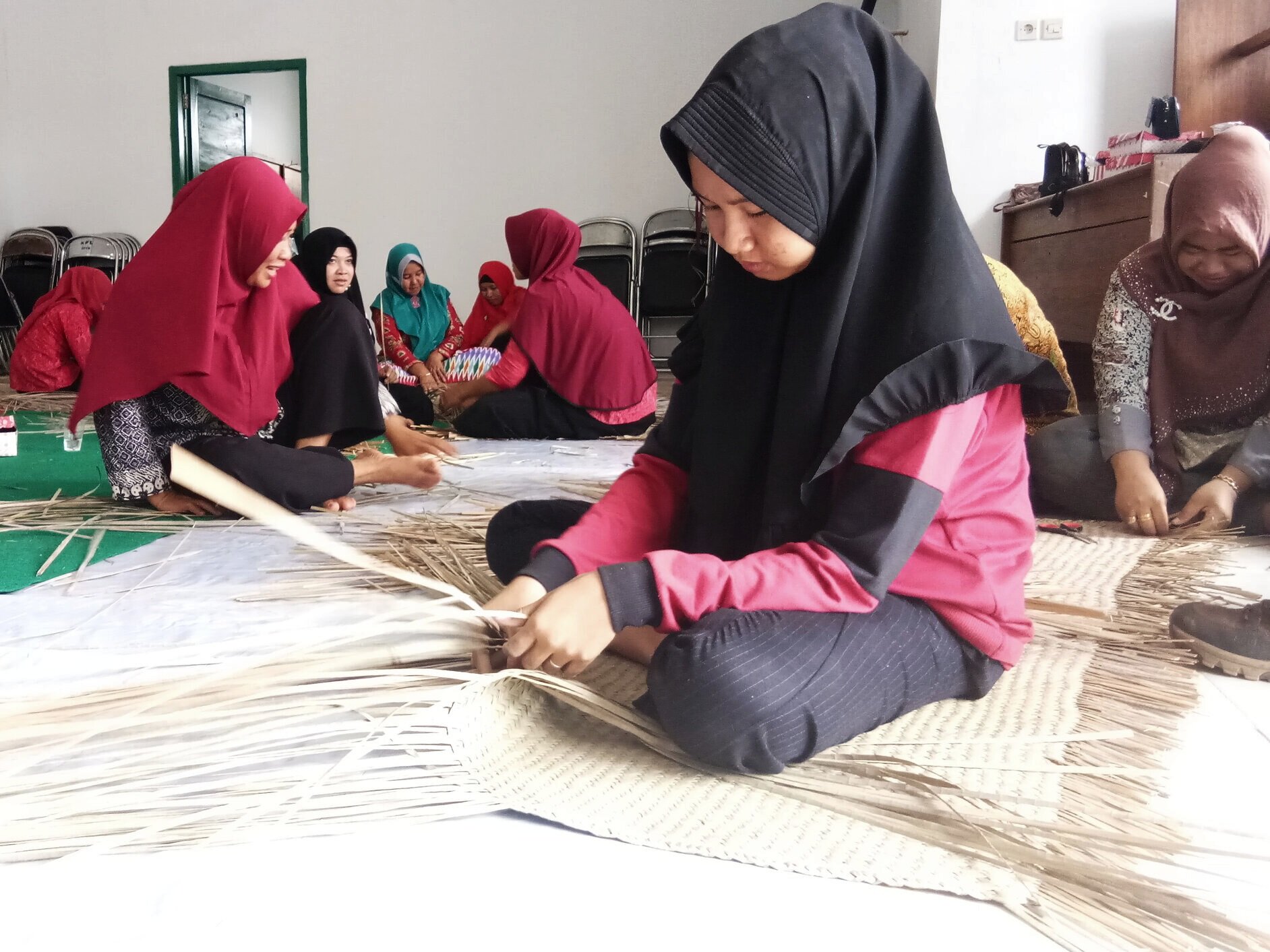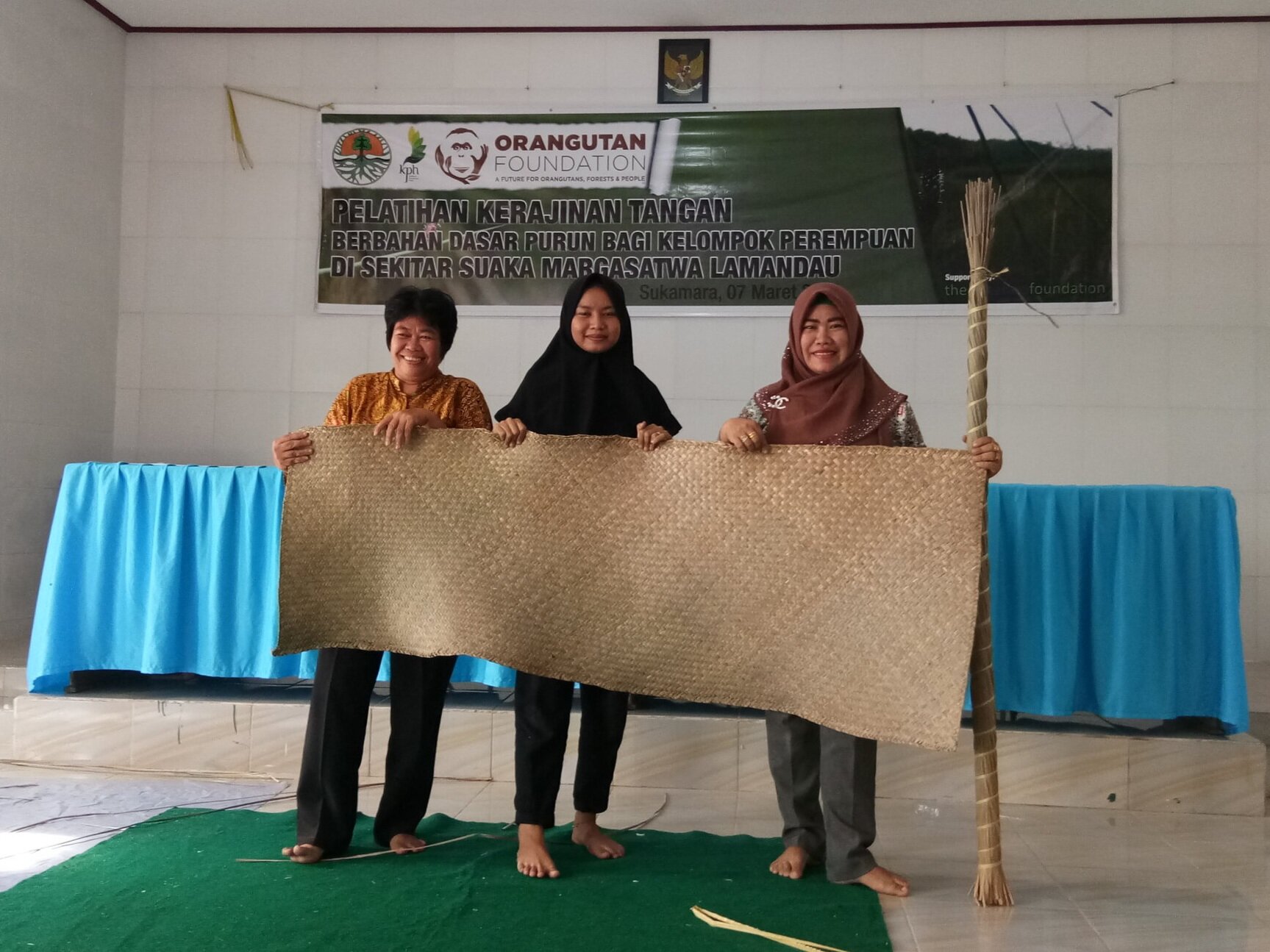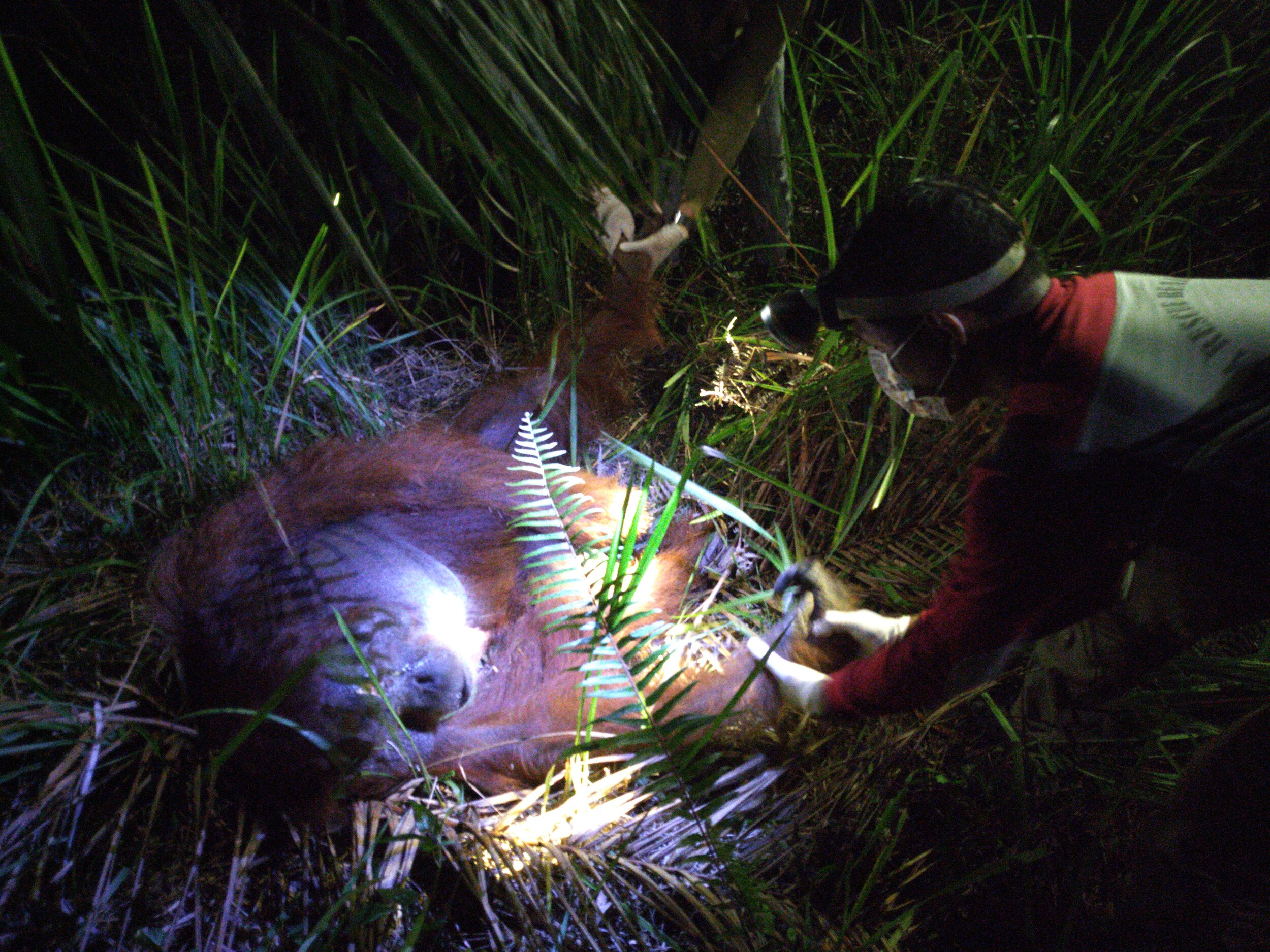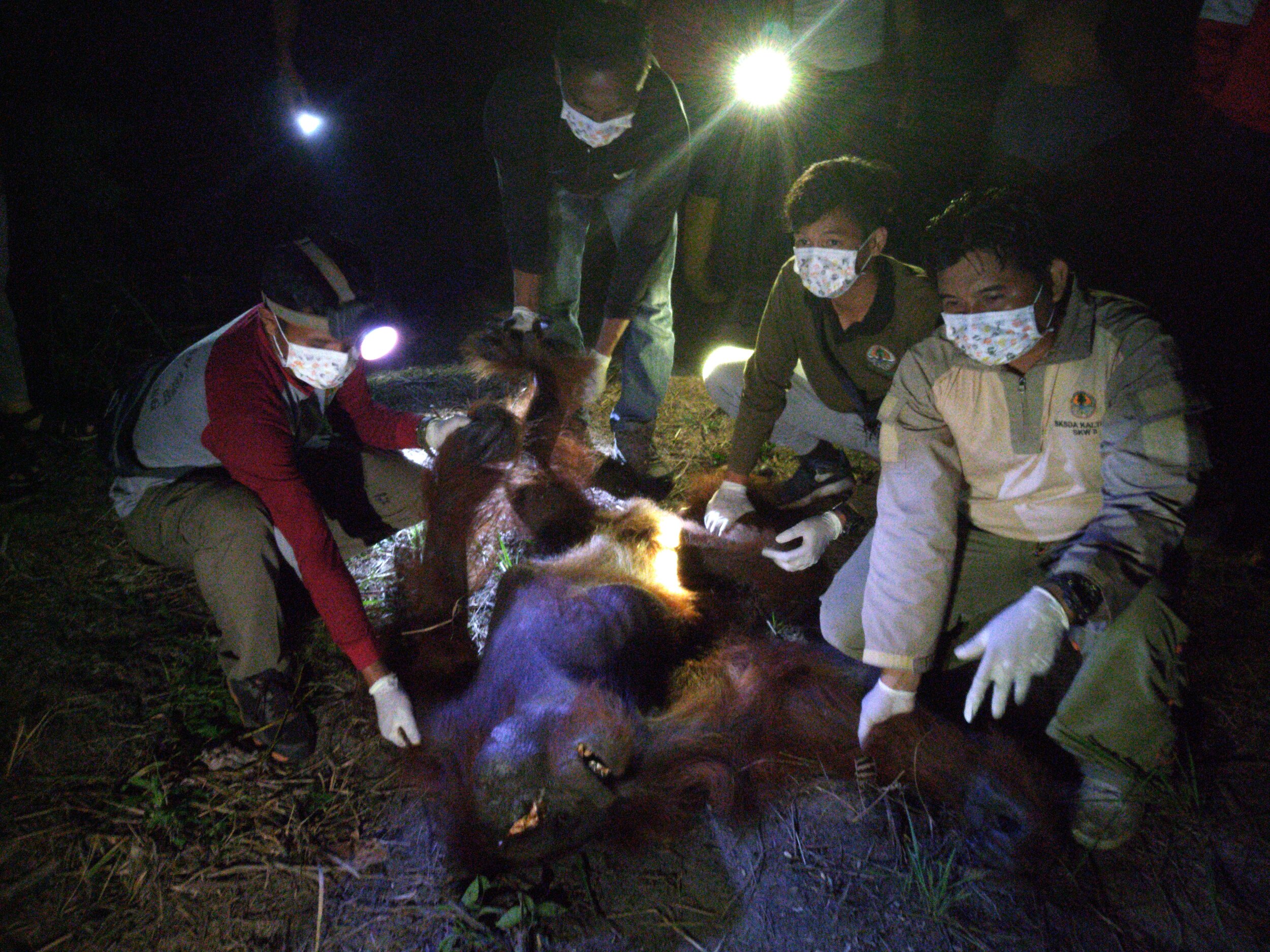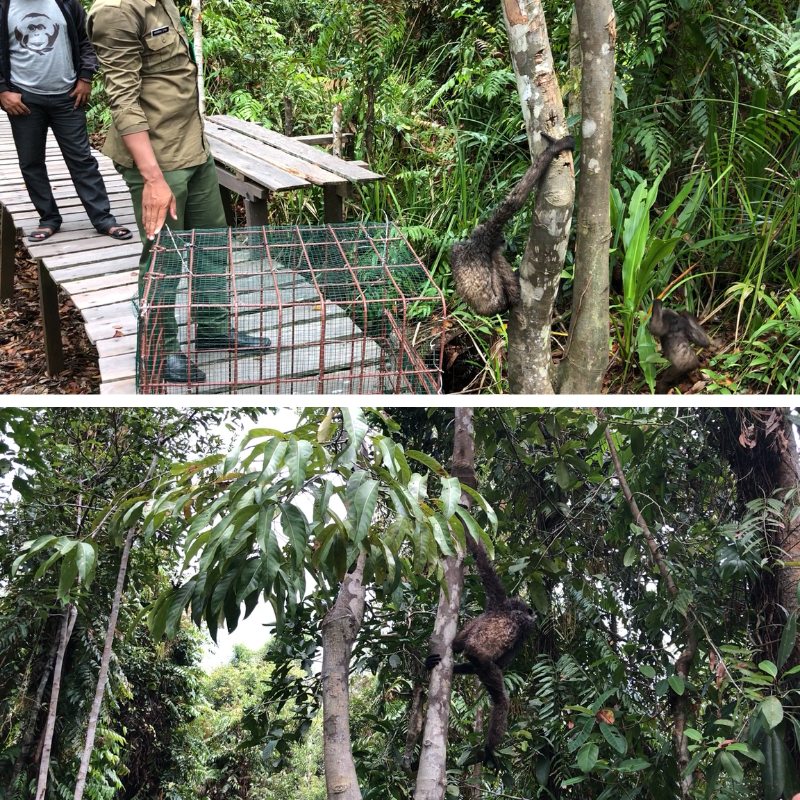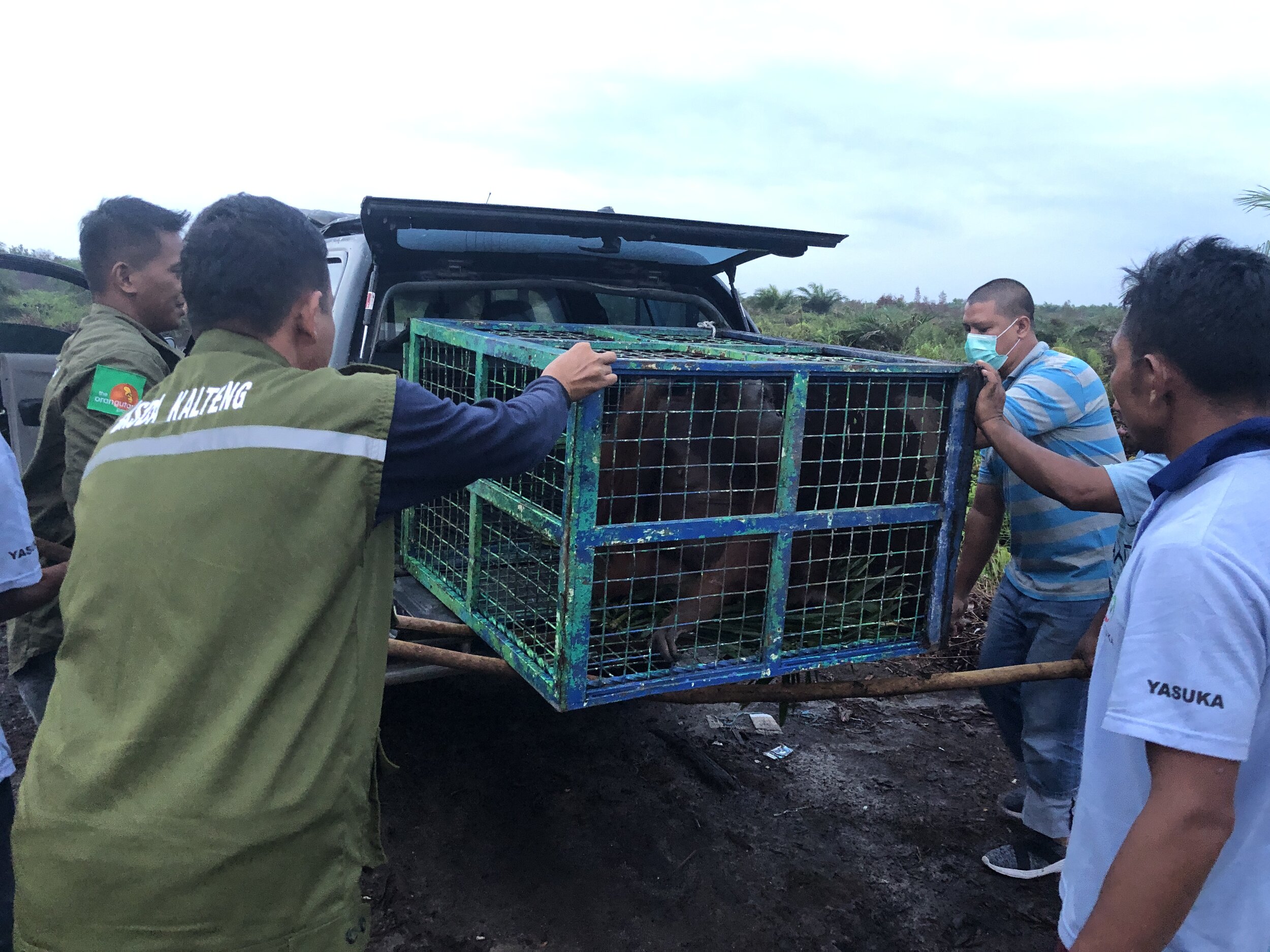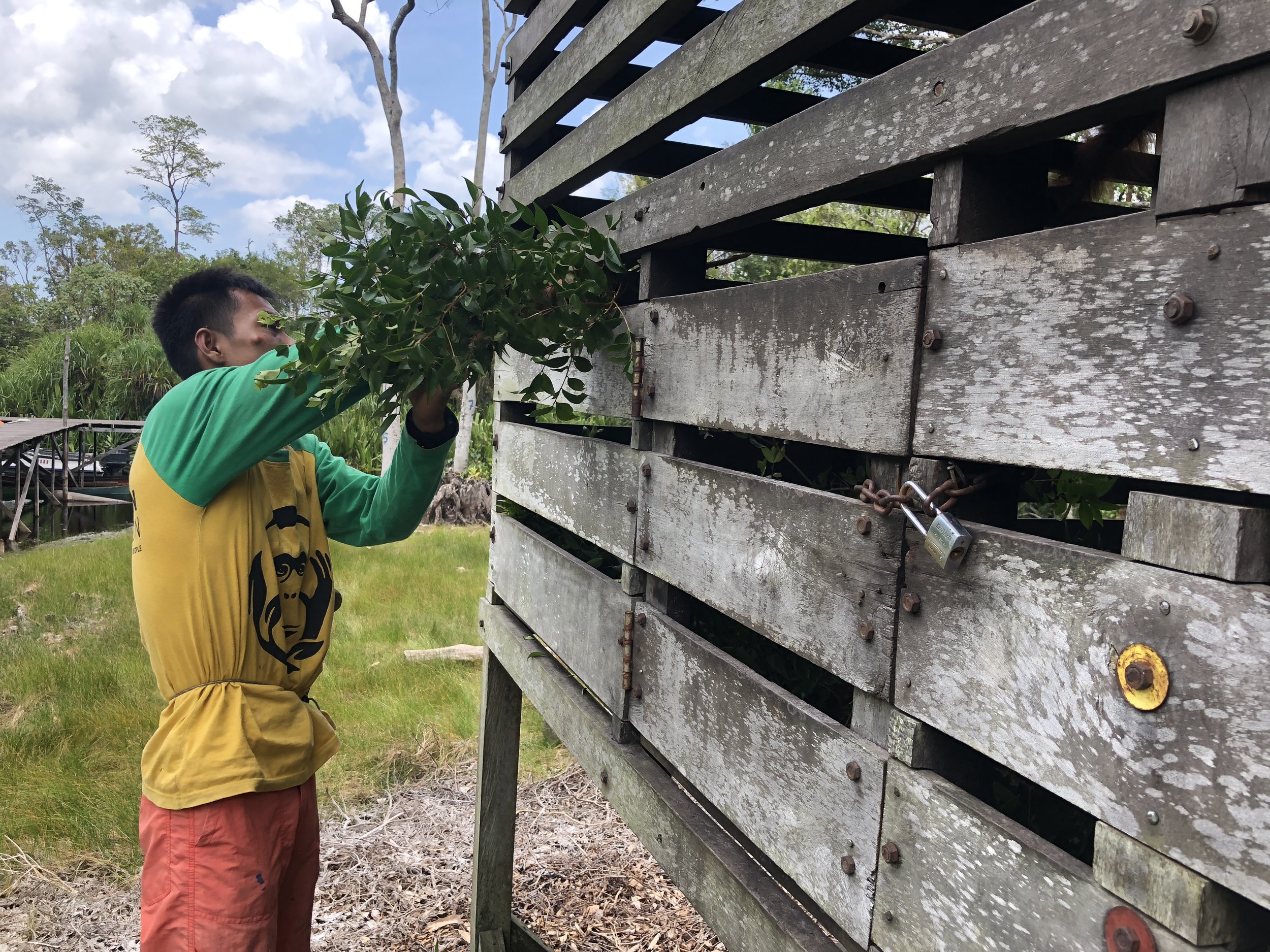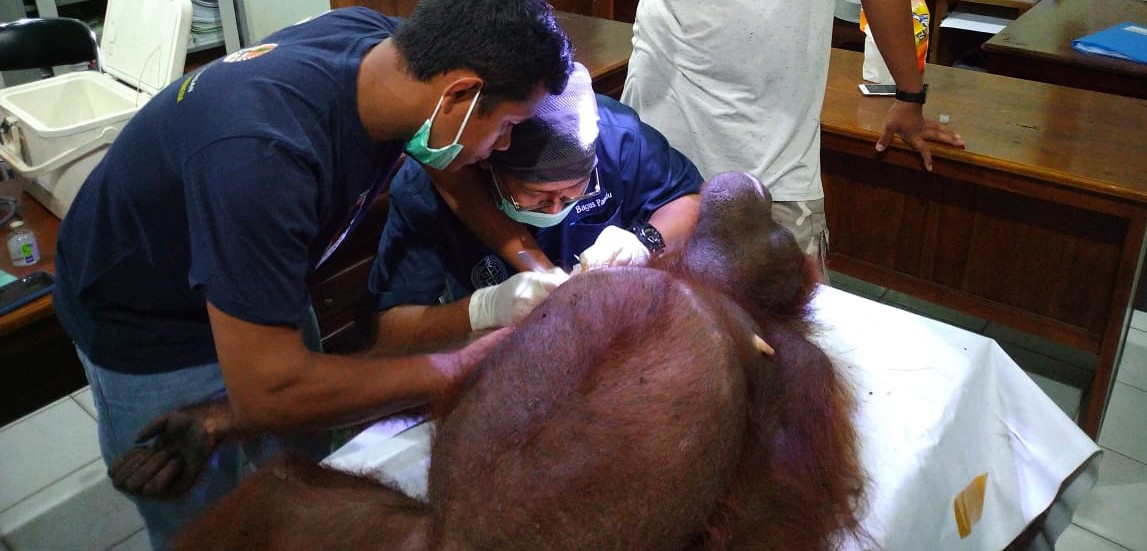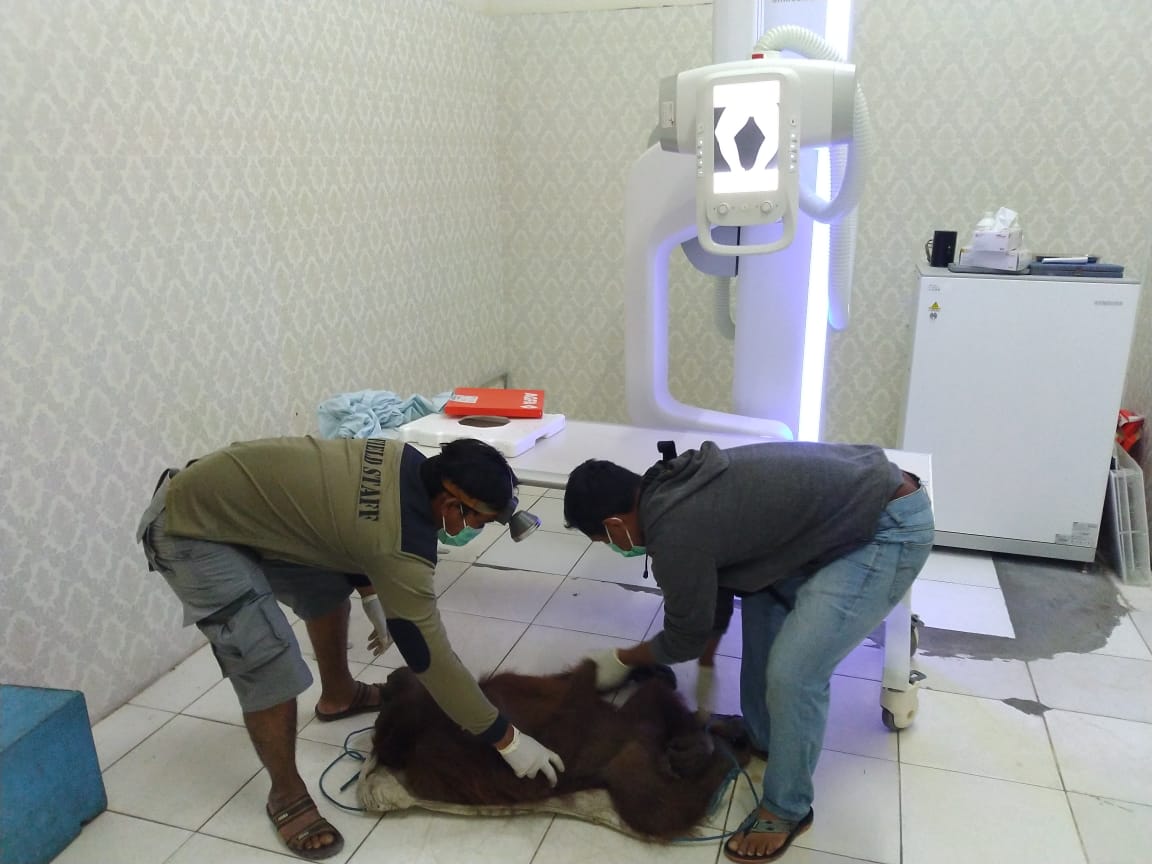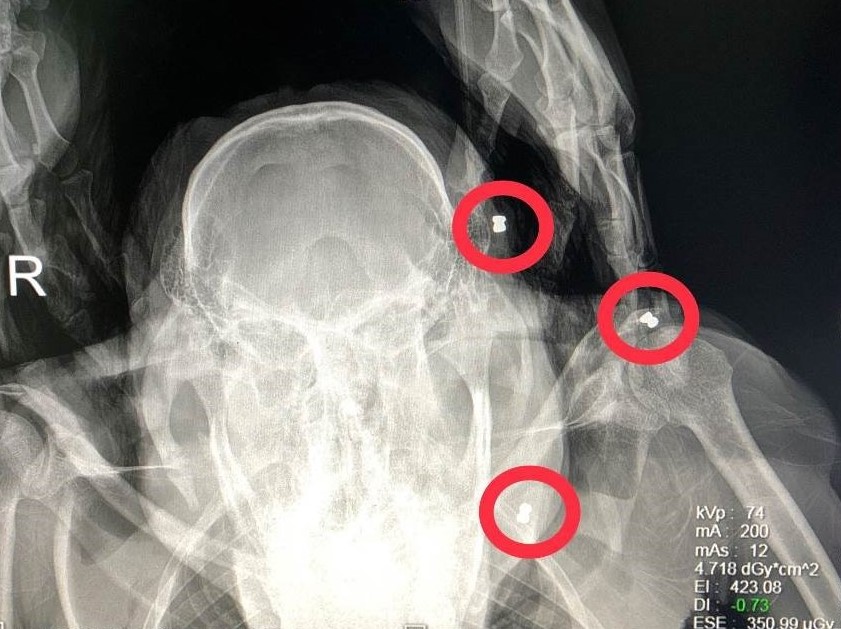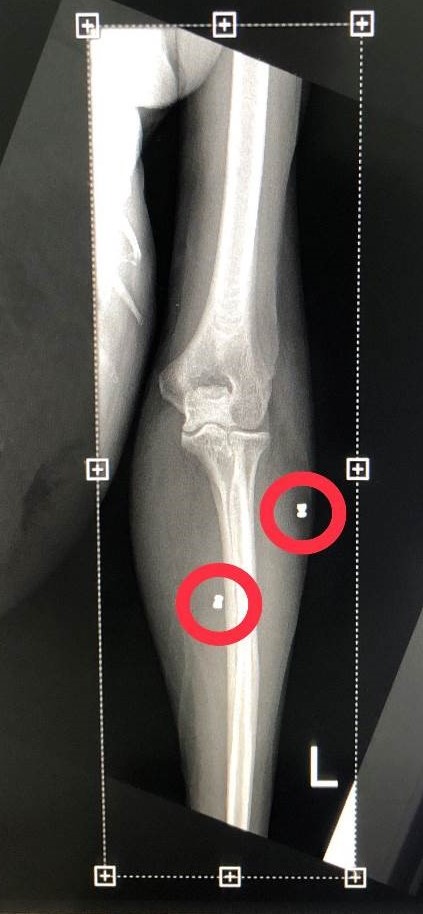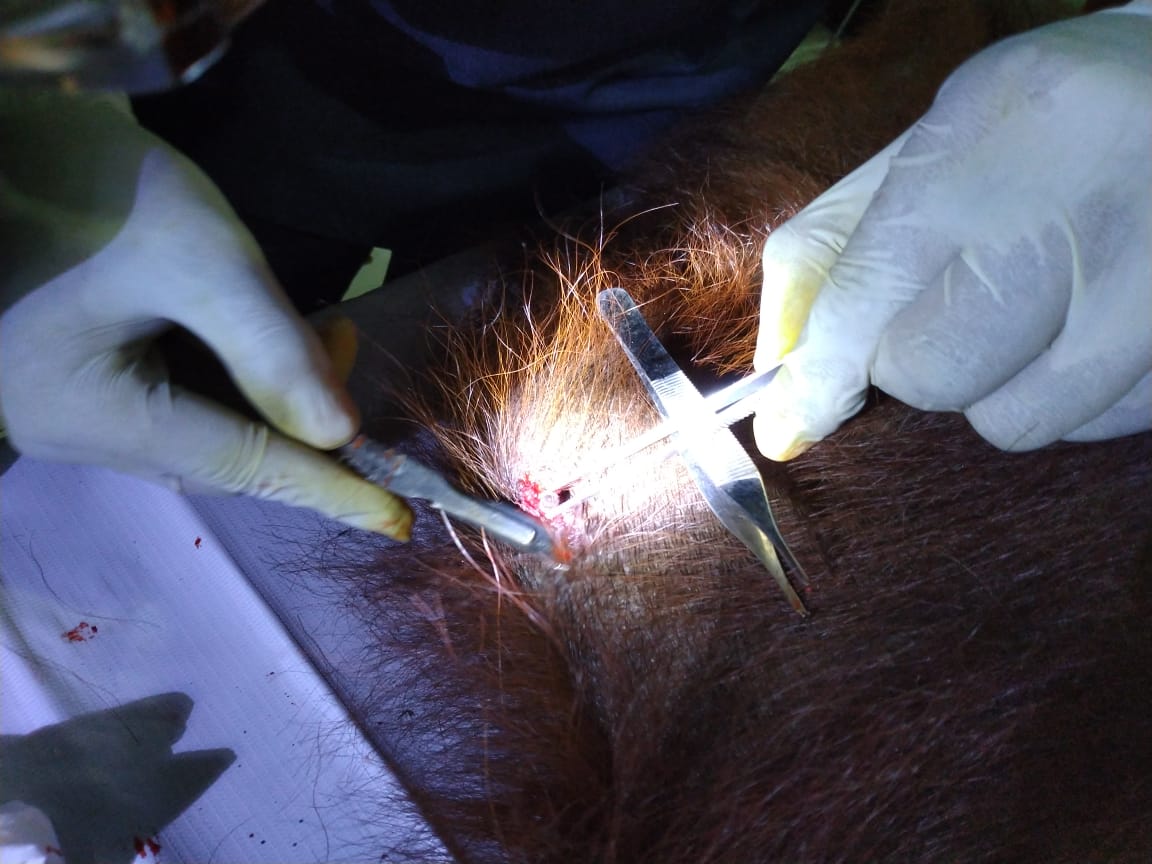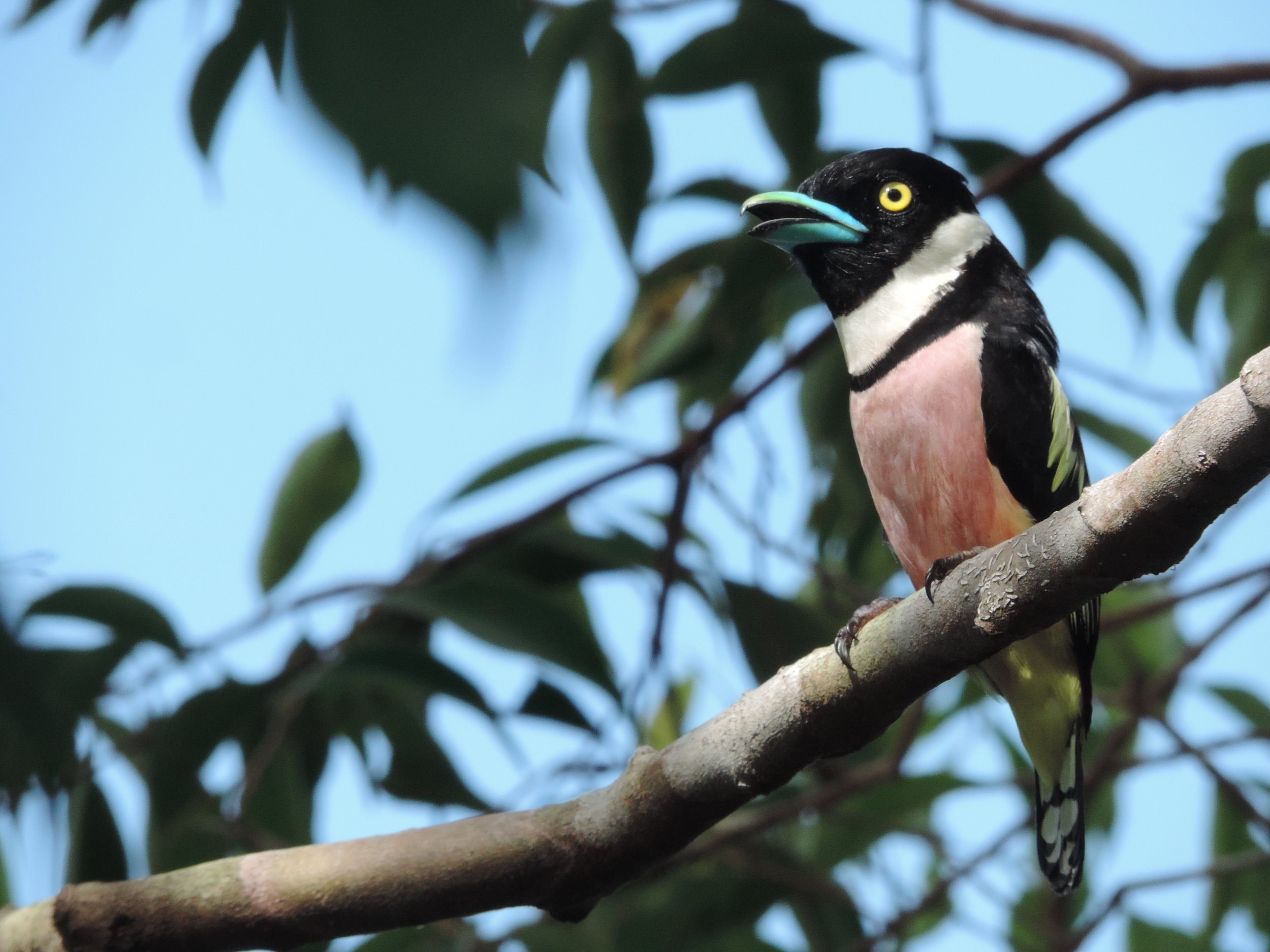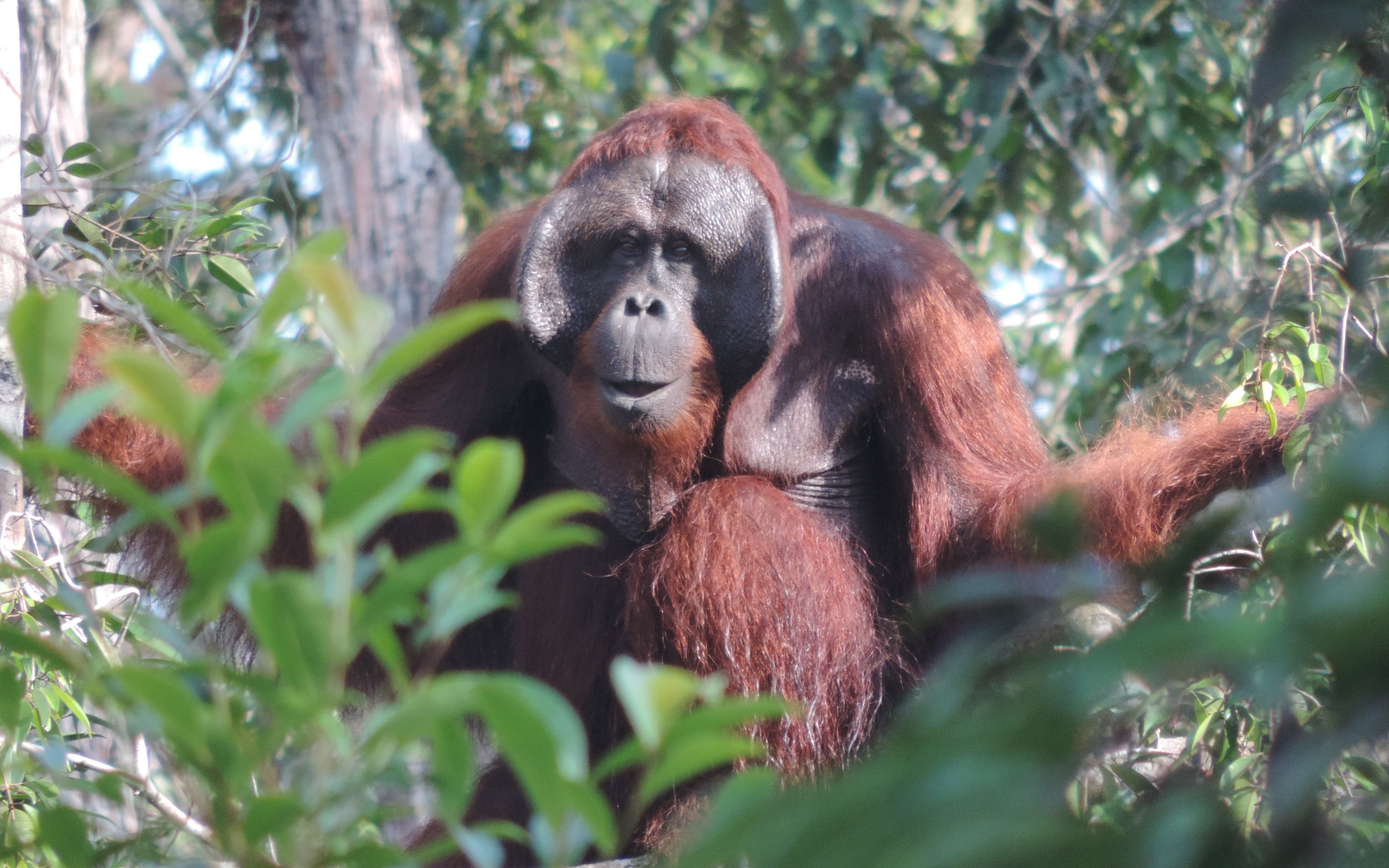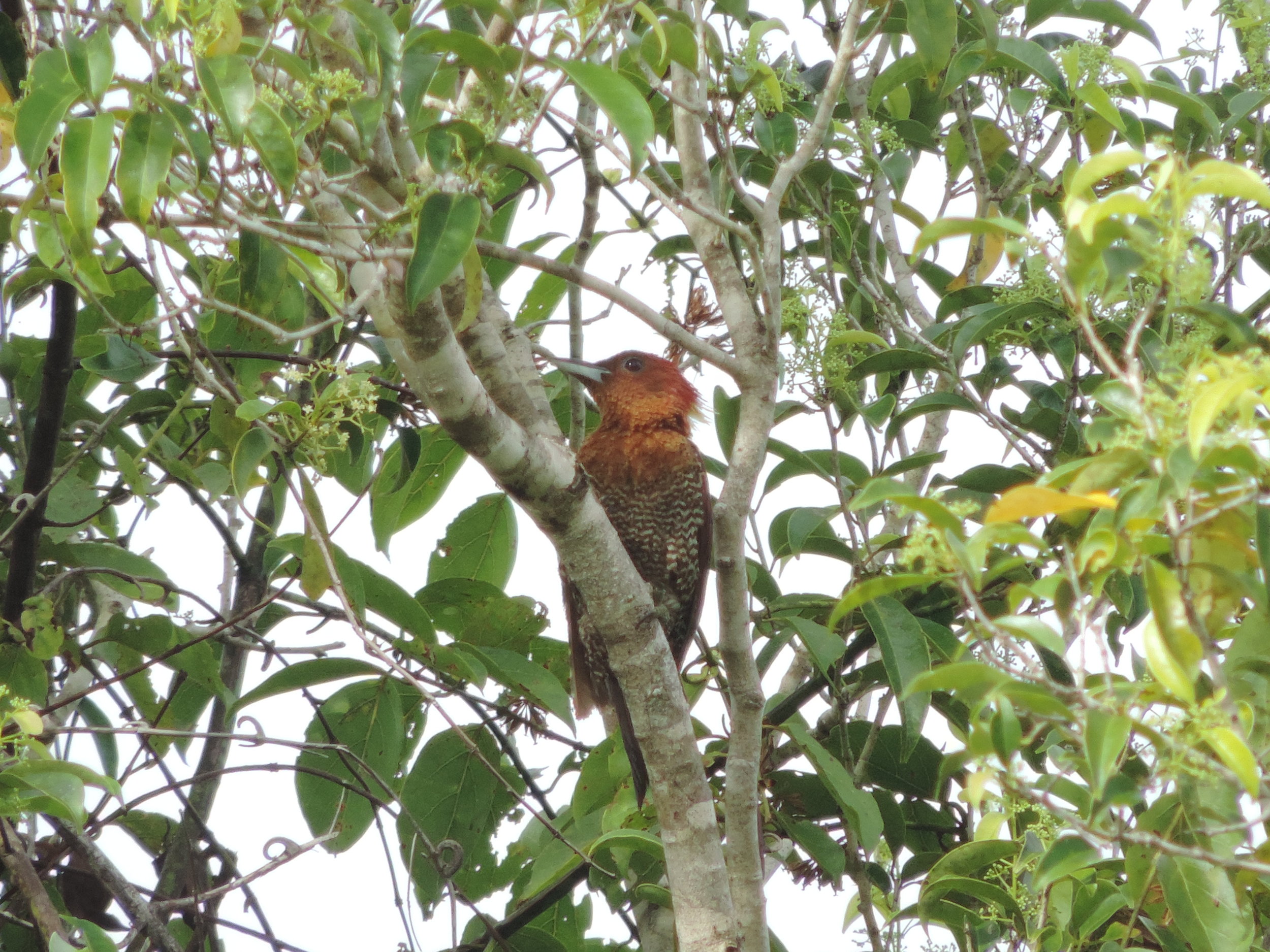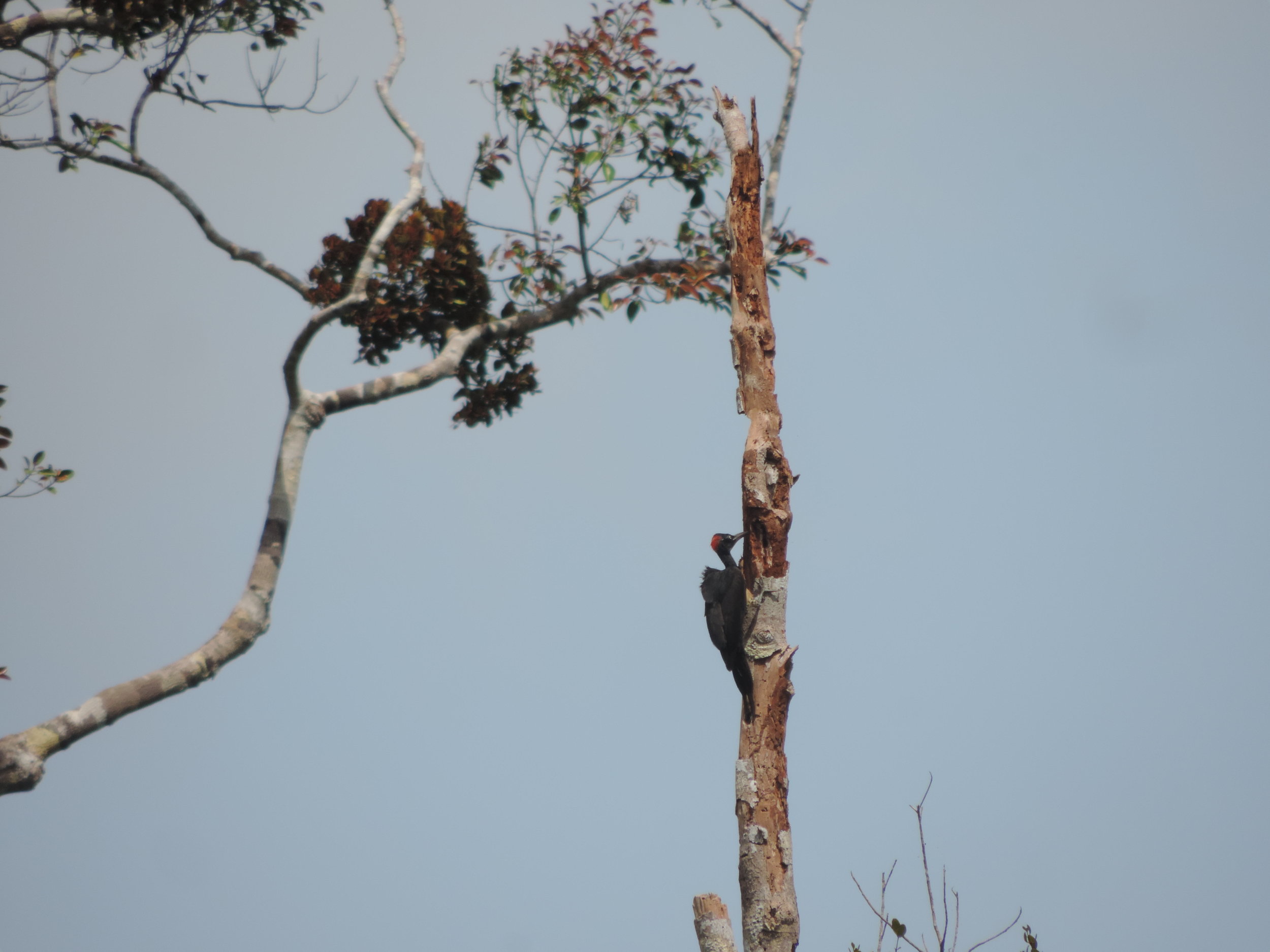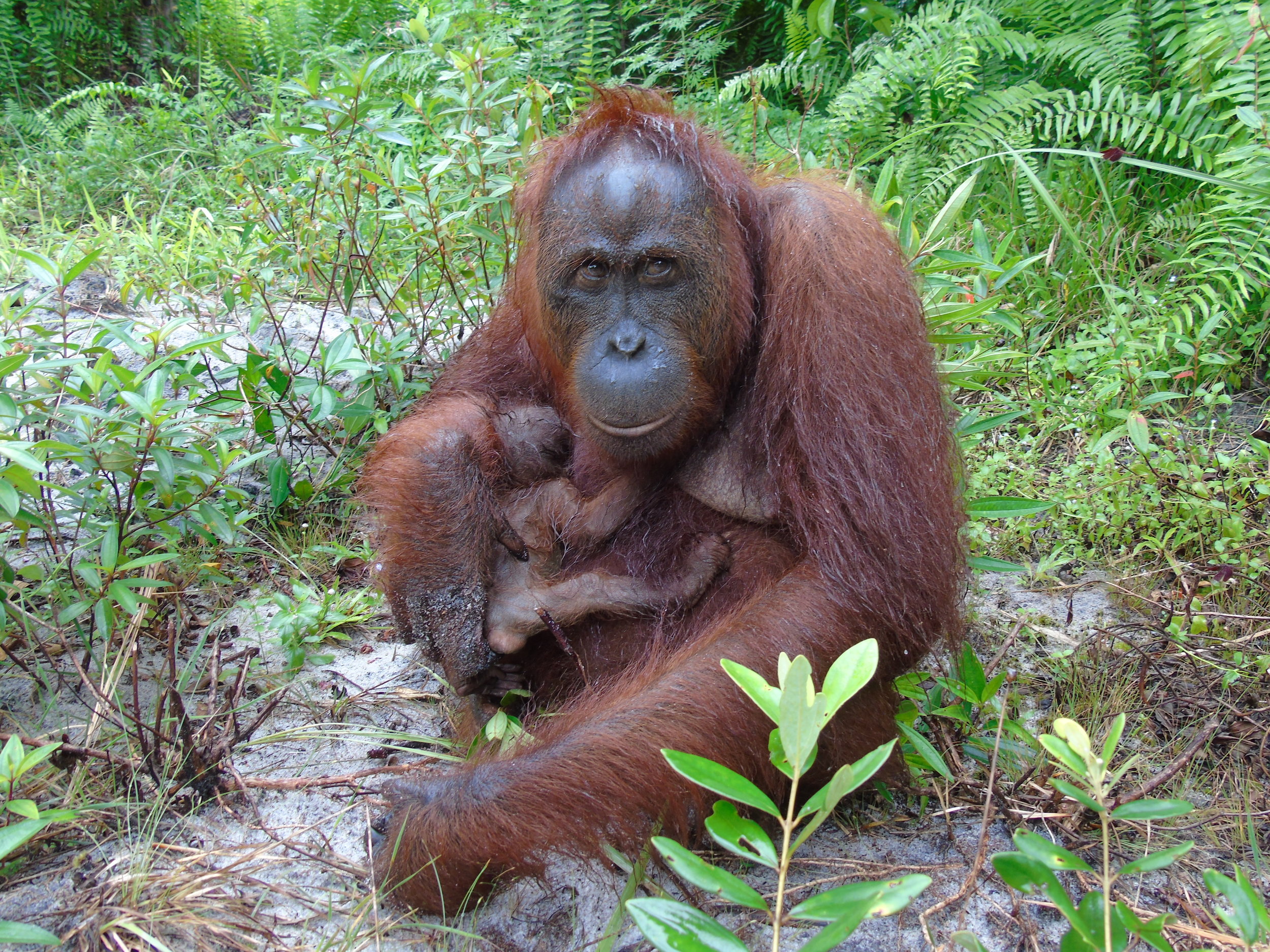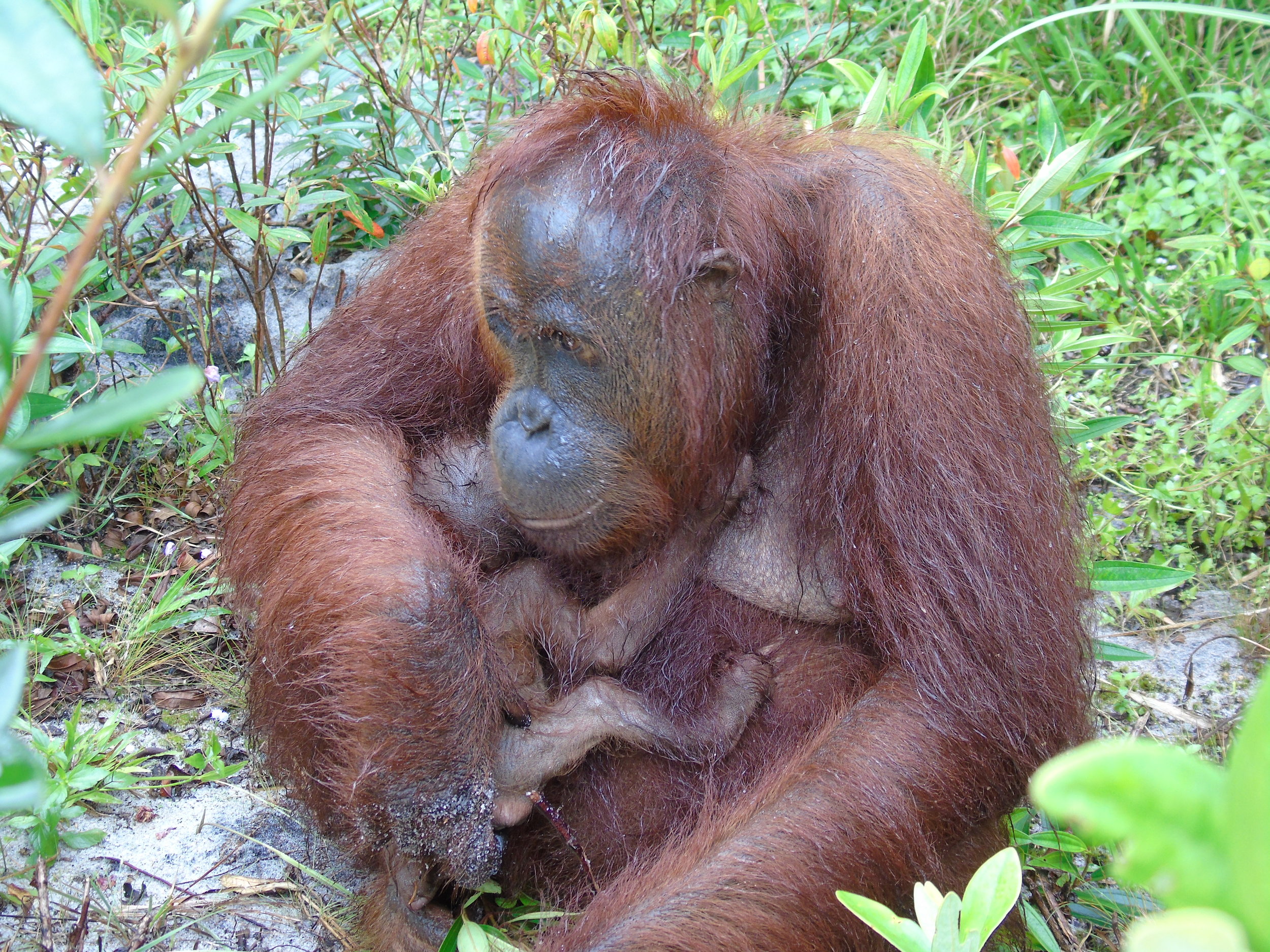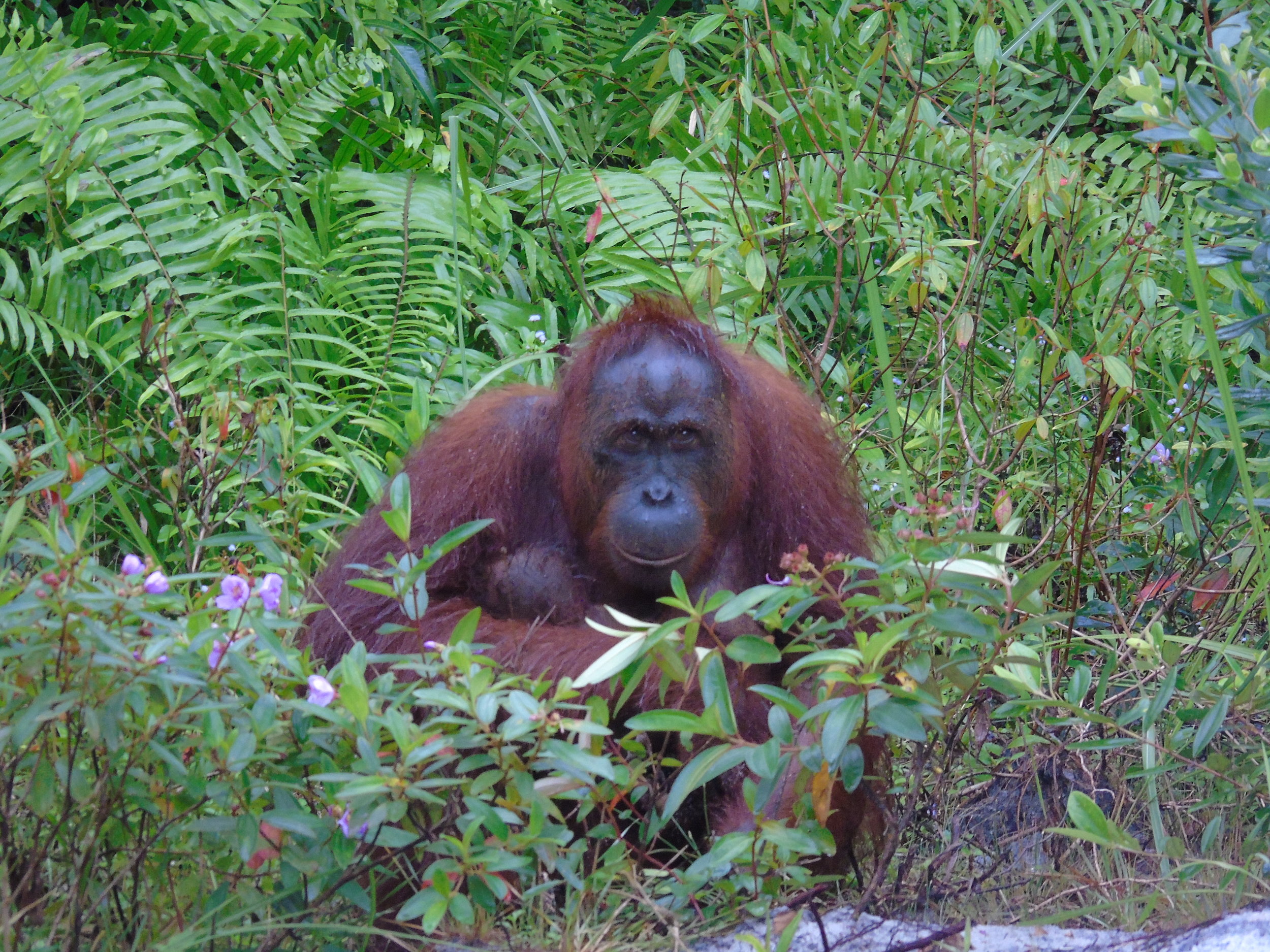It was with great excitement and surprise that Orangutan Foundation staff recently caught a glimpse of Pauline, a wild orangutan rarely seen at Camp Gemini, proudly displaying her new two-week-old baby boy.
Our team are thrilled to welcome the first newborn orangutan of the year, and the first offspring for new mother Pauline. Her infant has been named 'Pancaran' by Ibu Siti, the local Minister of Environment and Forestry. It’s heartening that in the Lamandau Wildlife Reserve, orangutans have provided us with some recent good news and encouragement for the future.
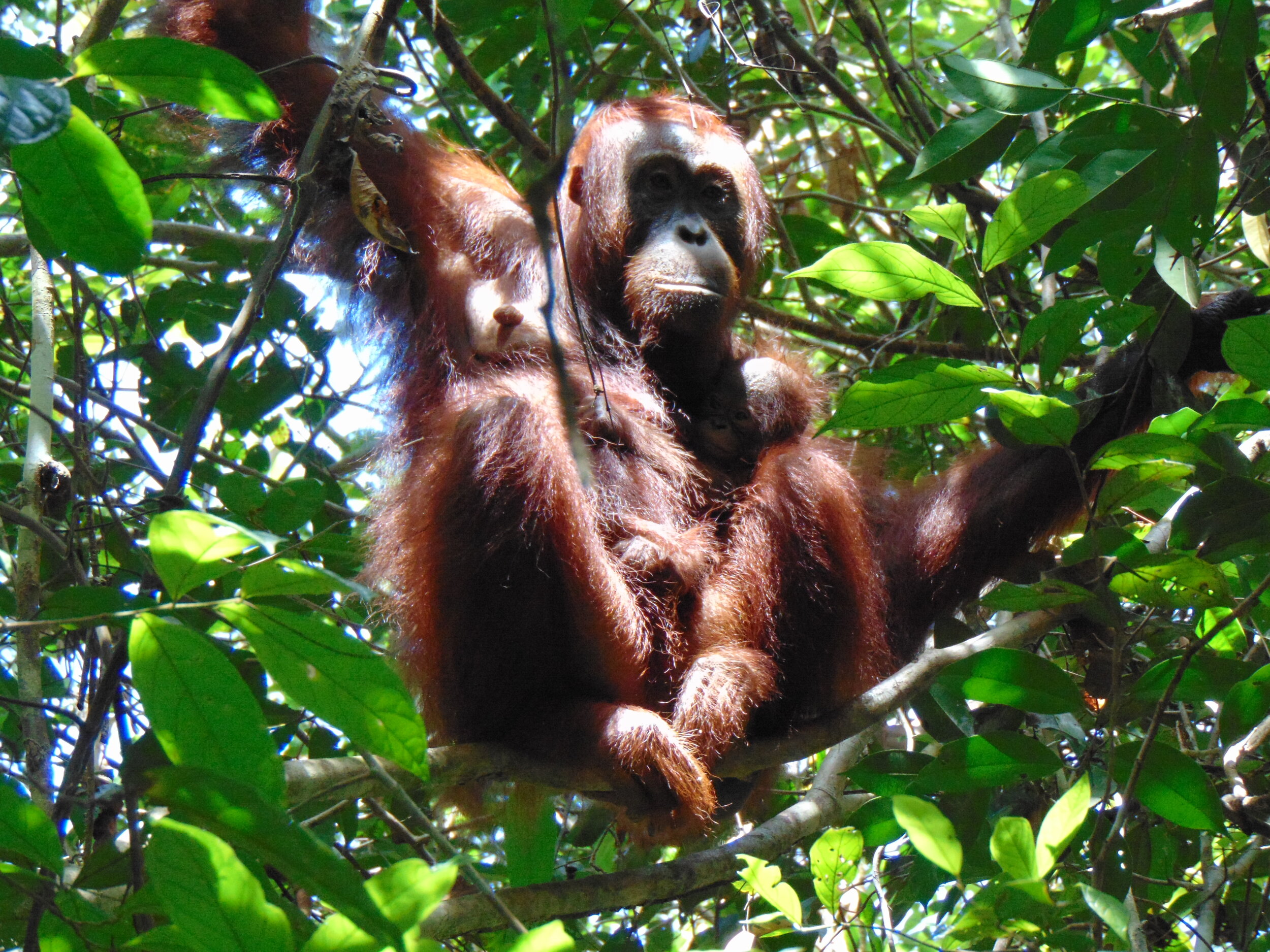
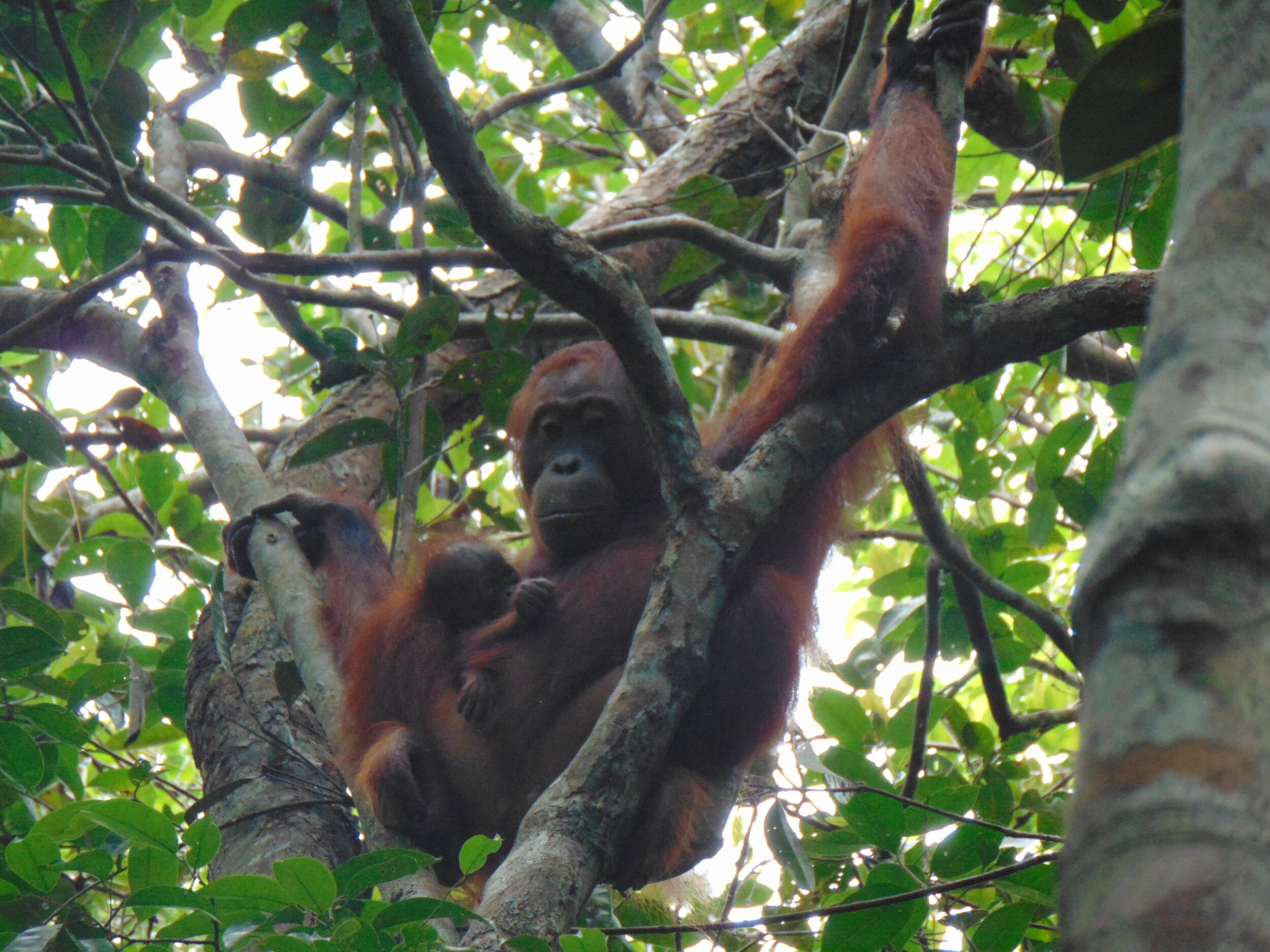

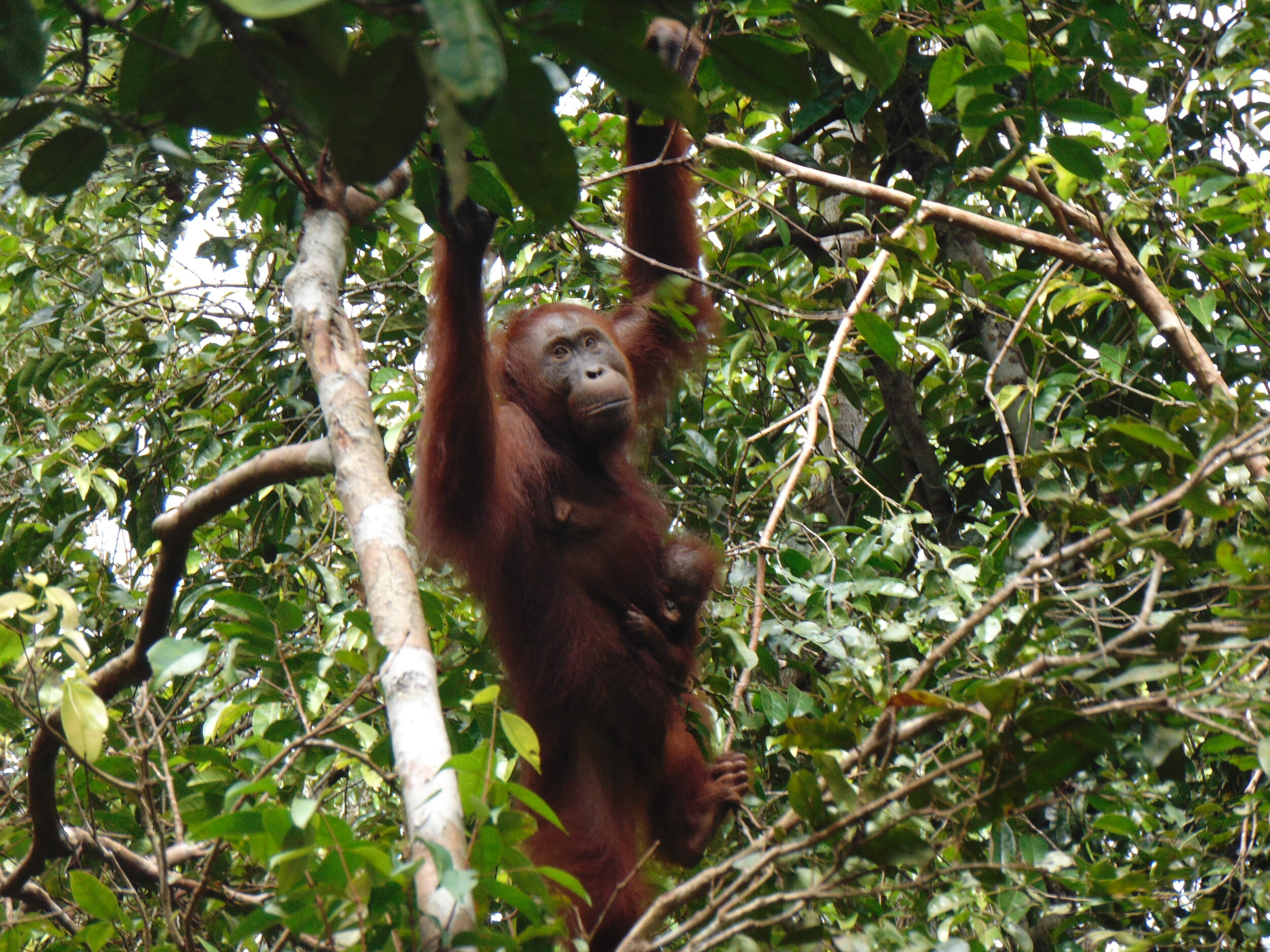
Pauline is the thirteen-year-old daughter of reintroduced orangutan Paula, and spends much of her time in the forest. It’s thought that last year Pauline mated with Carlos, a wild male orangutan who is also sporadically spotted at Camp Gemini. What is just as exciting is that she may not be the only orangutan with a newborn this year, as four other females in the forest also appear to be pregnant.
Betli and Queen have extended bellies and are eating for two at Camp Buluh
Our field teams keep a close eye on all of the wild and reintroduced orangutans that visit our five forest camps in the Lamandau Wildlife Reserve, but are keeping particularly close tabs on Labetty and Suwita at Camp Rasak, and Queen and Betli at Camp Buluh who may all be expecting newborns soon. Hopefully providing a bumper year for orangutan births in the forest.
Despite her pregnancy, Labetty is still a speedy climber though the forest
Orangutans take many years to rear their young, which is why having observed 15 births in the past five years alone, our team are proud to see that the Reserve is clearly a habitat in which these critically endangered great apes are not only surviving but thriving. We will continue to protect this vital orangutan stronghold, and look forward to welcoming more new arrivals in the coming months.




